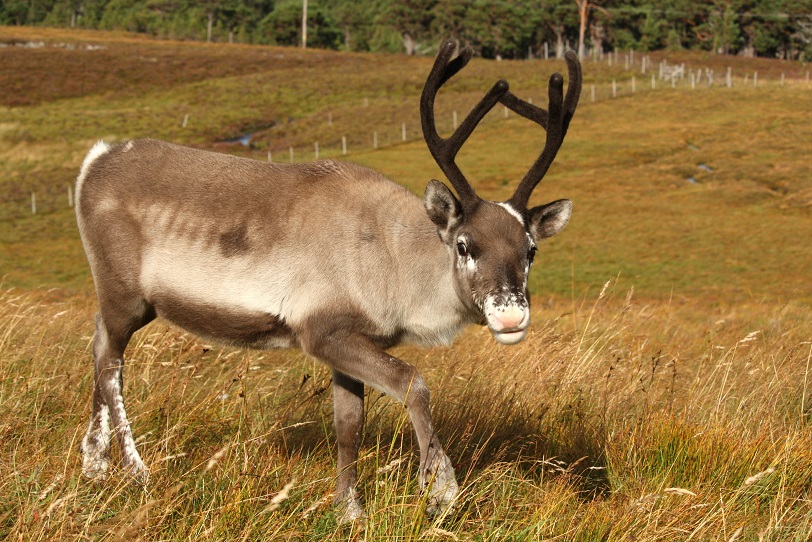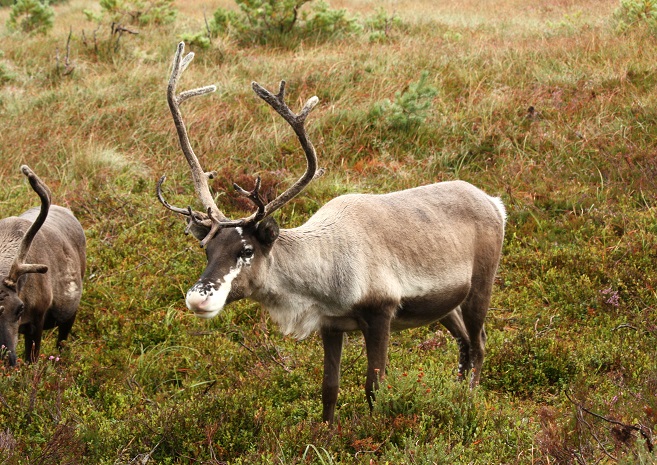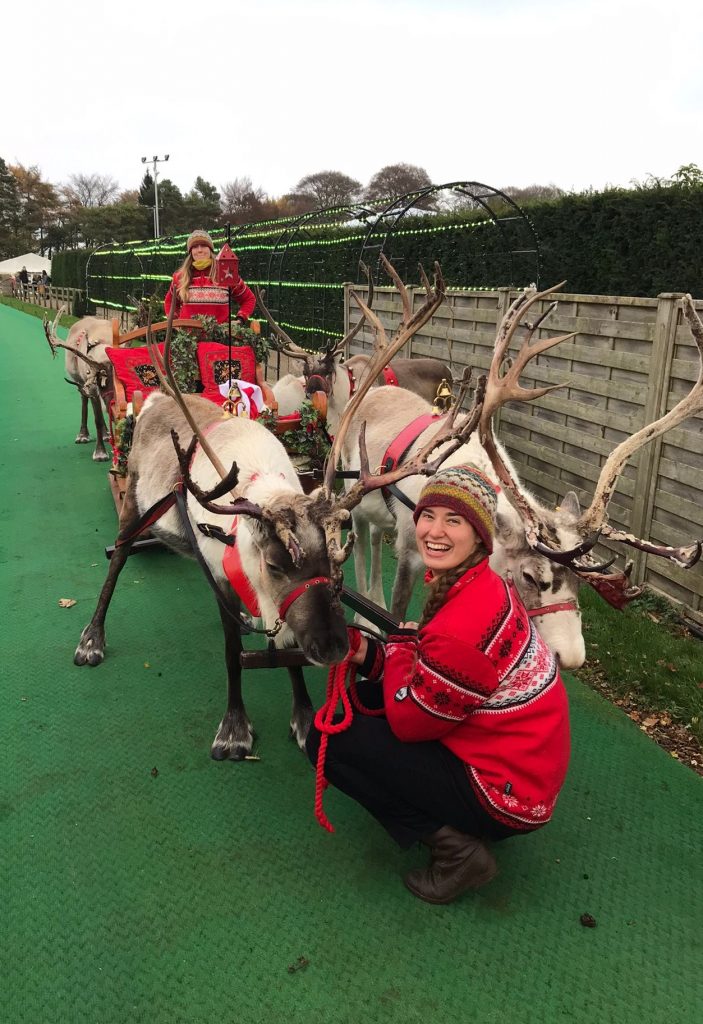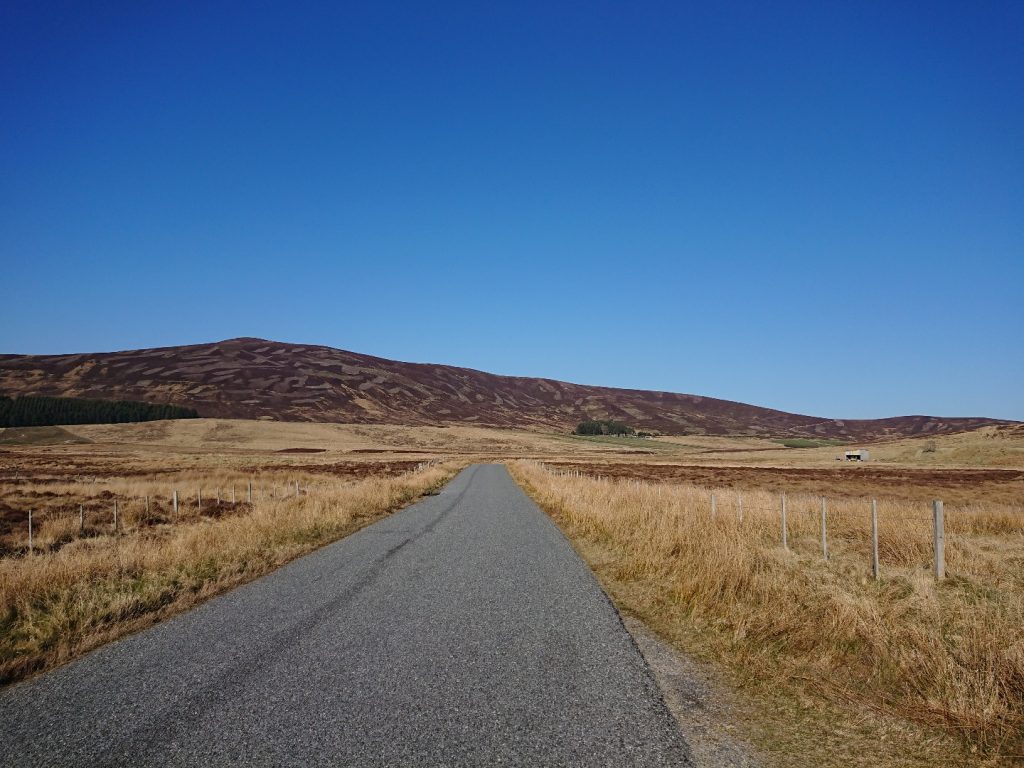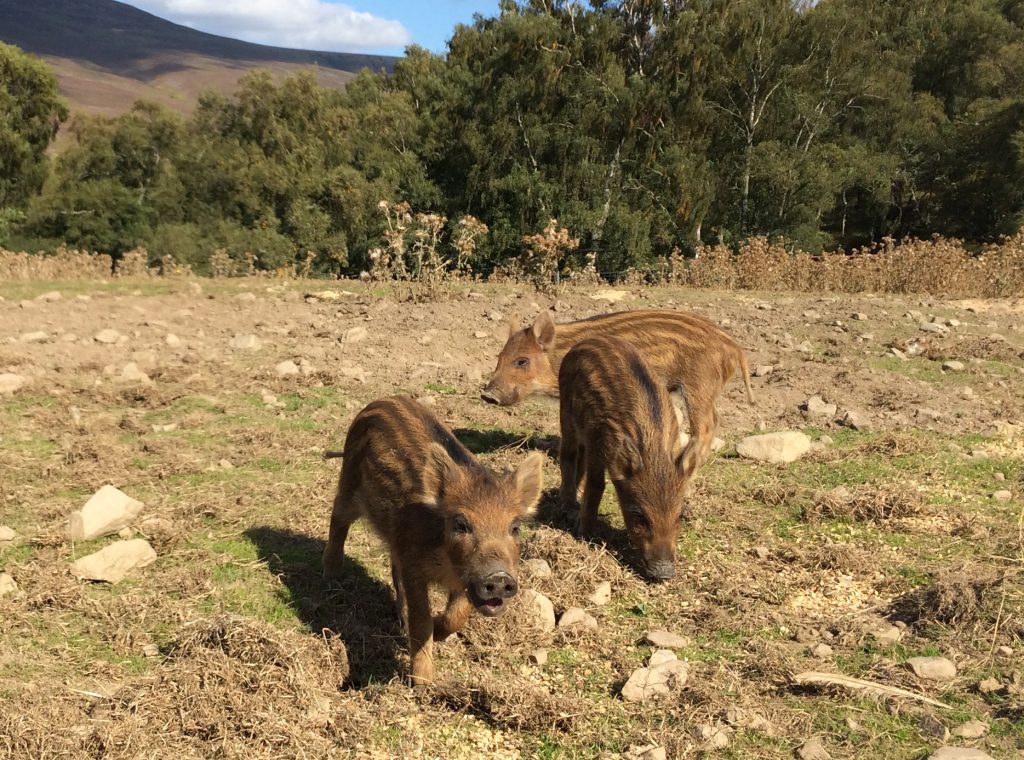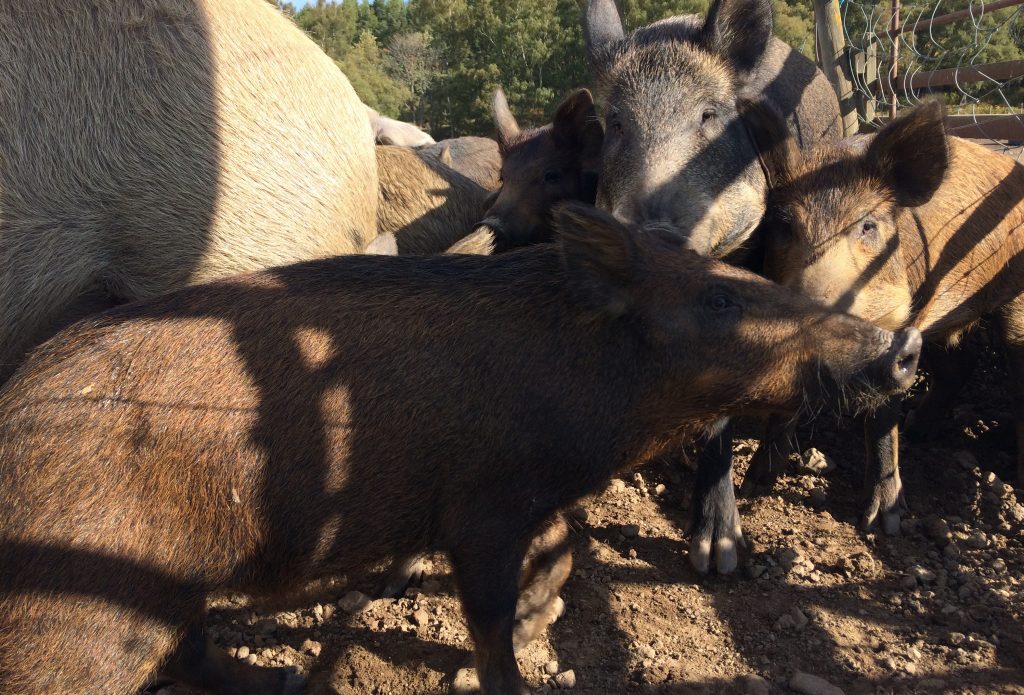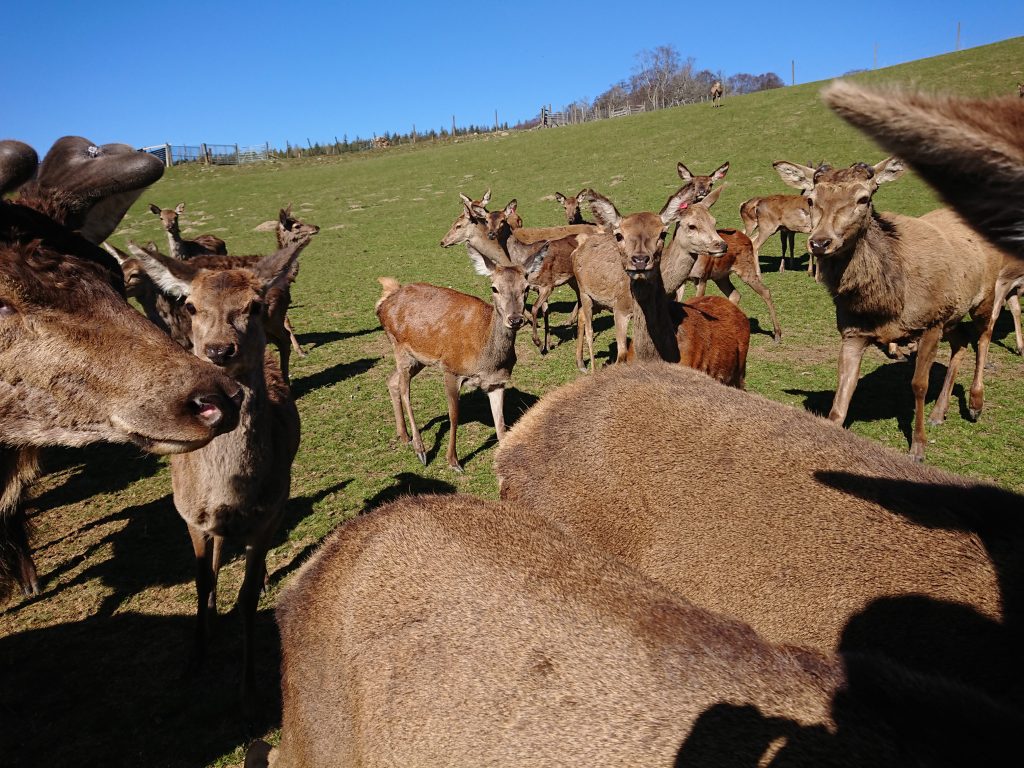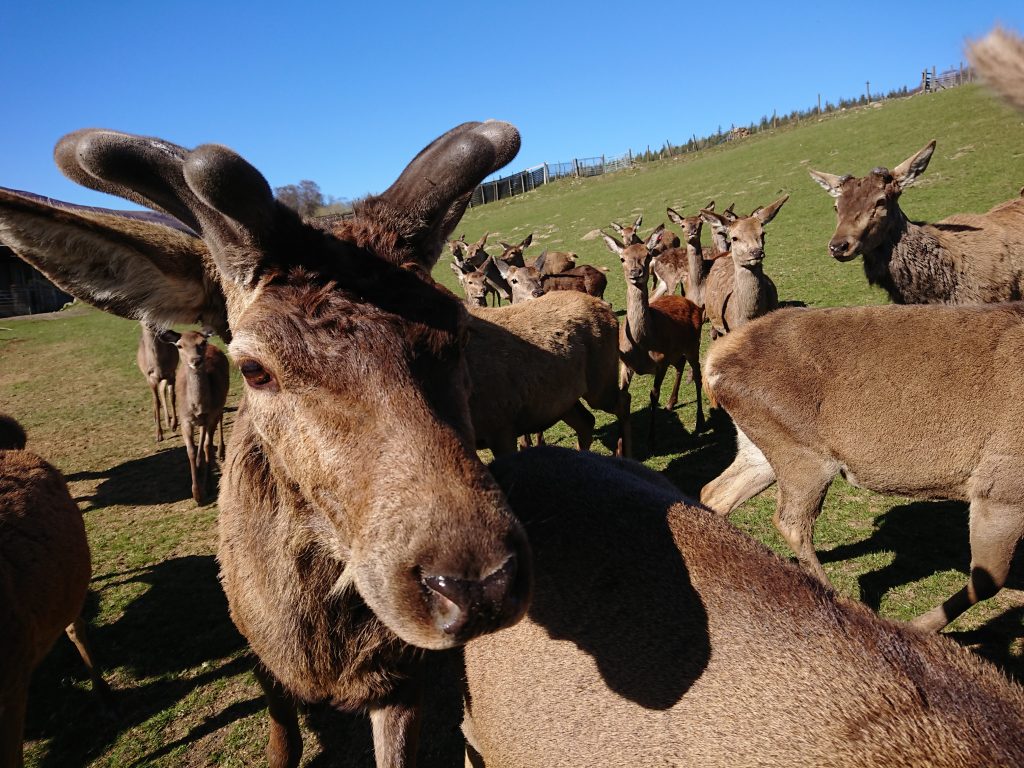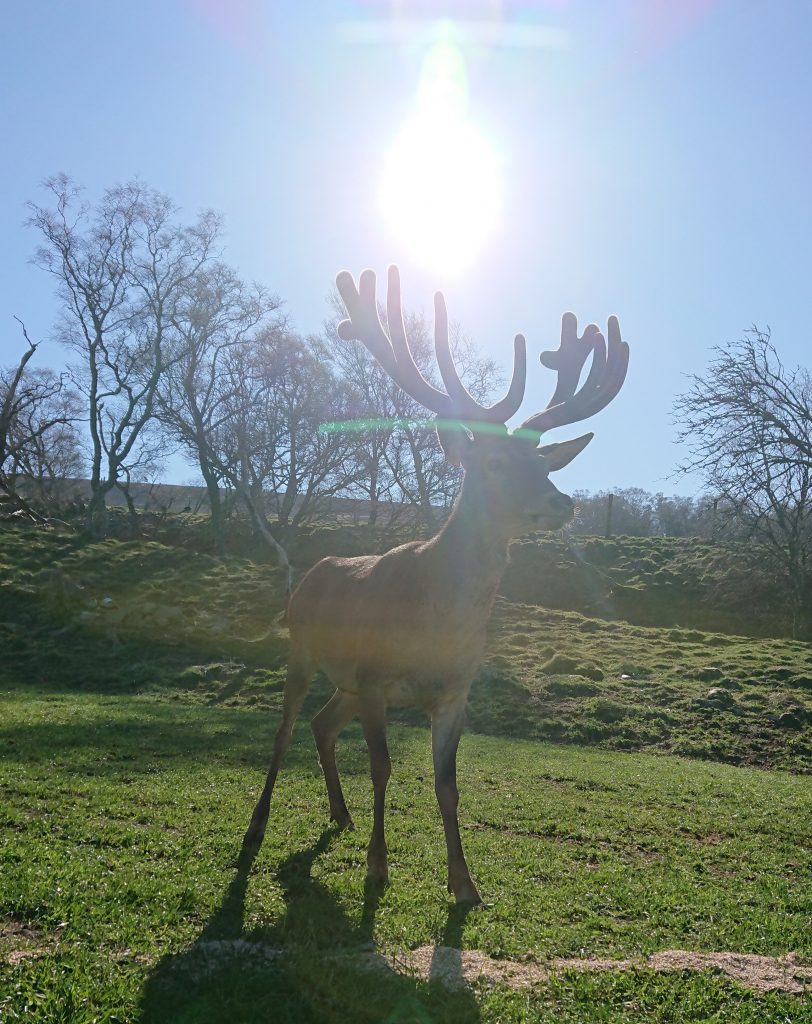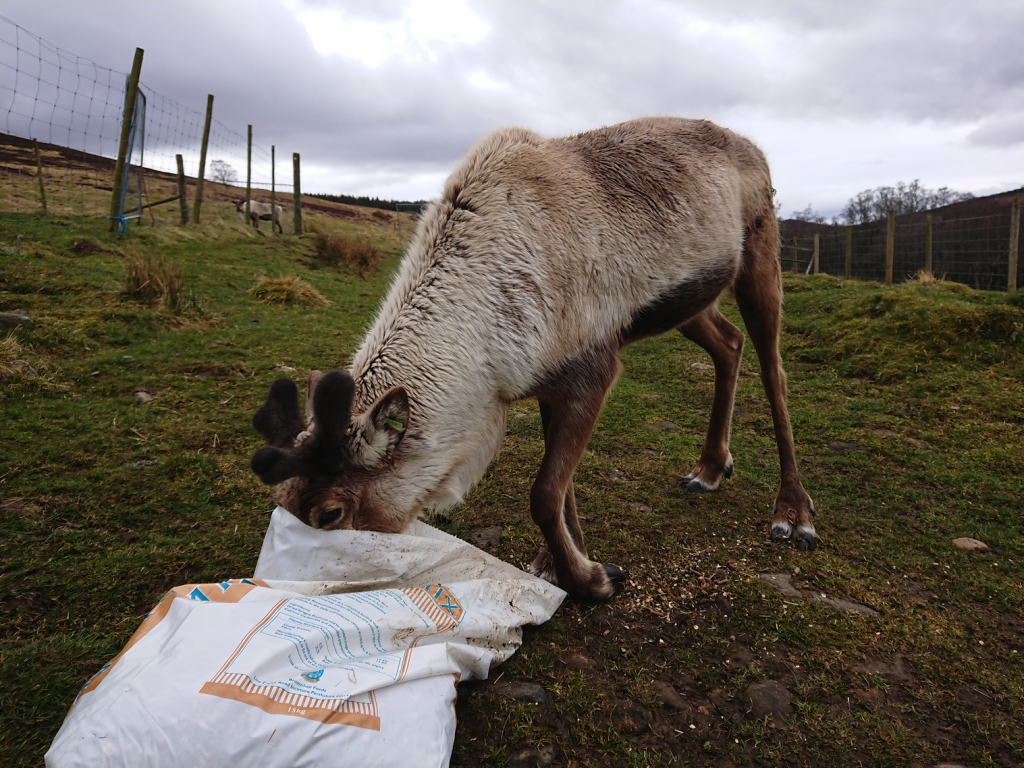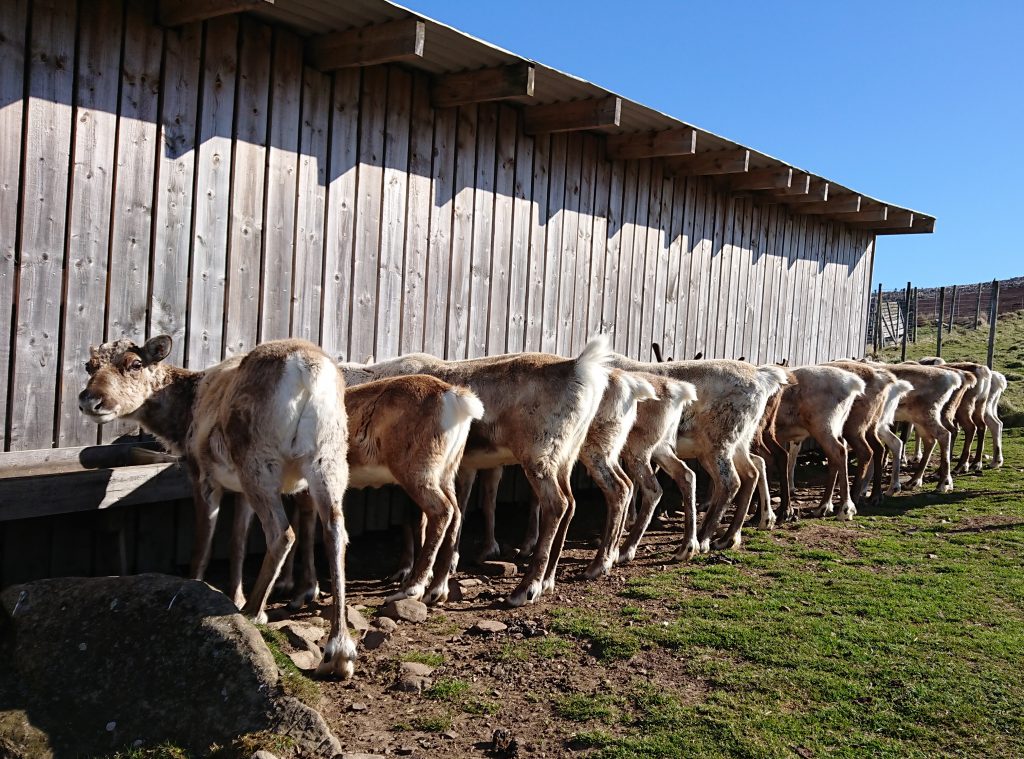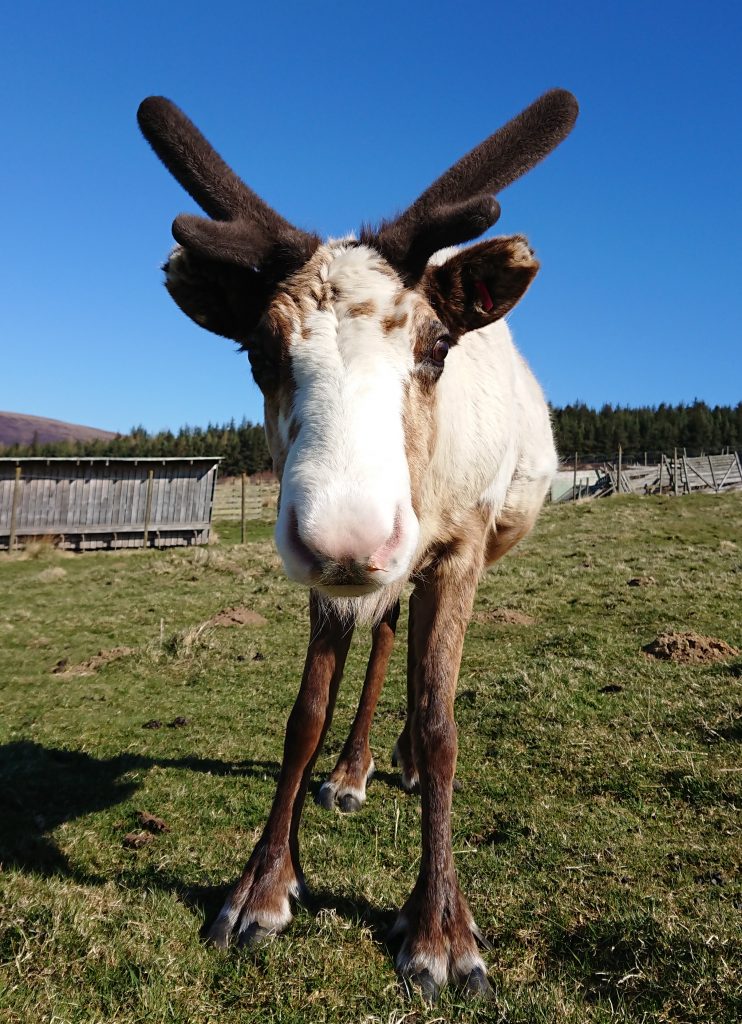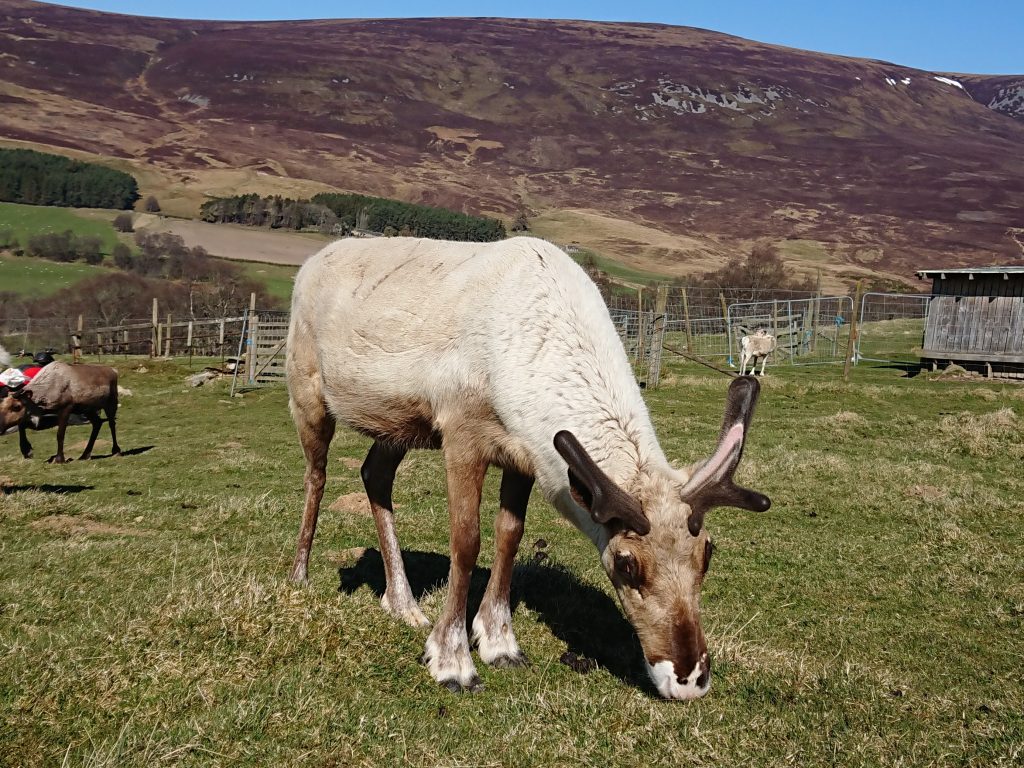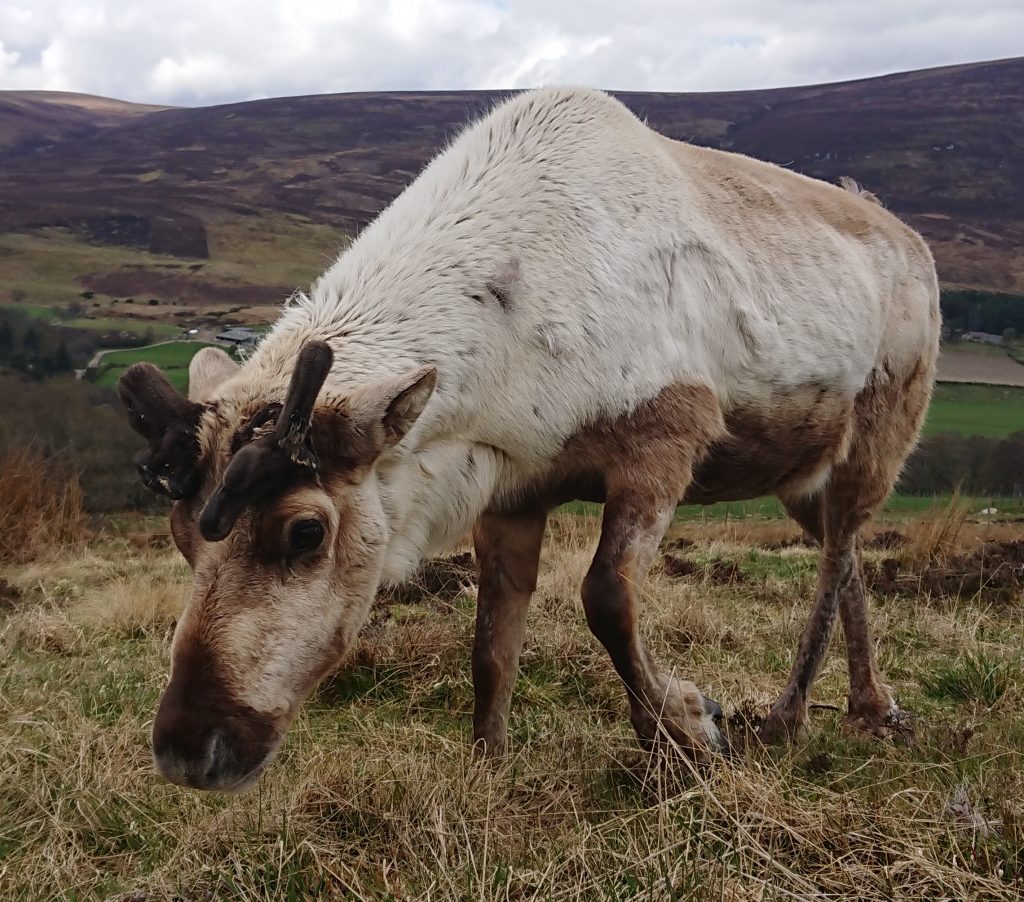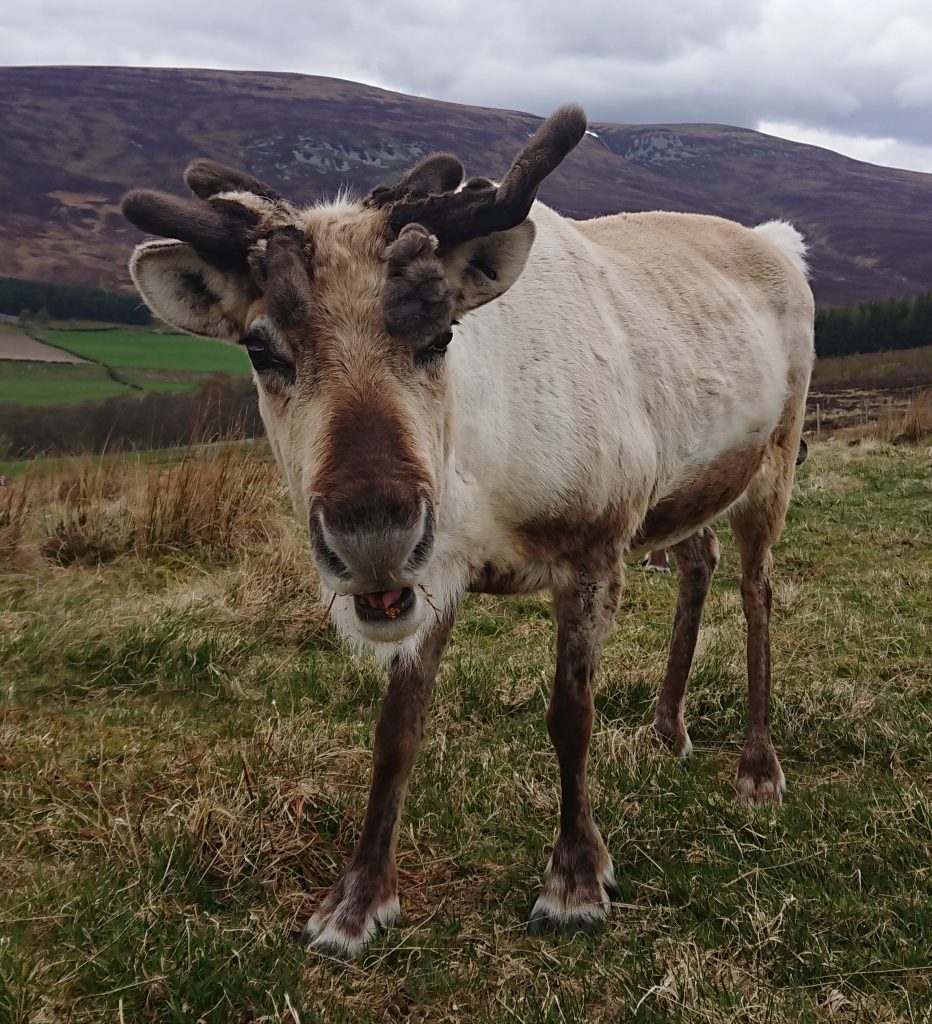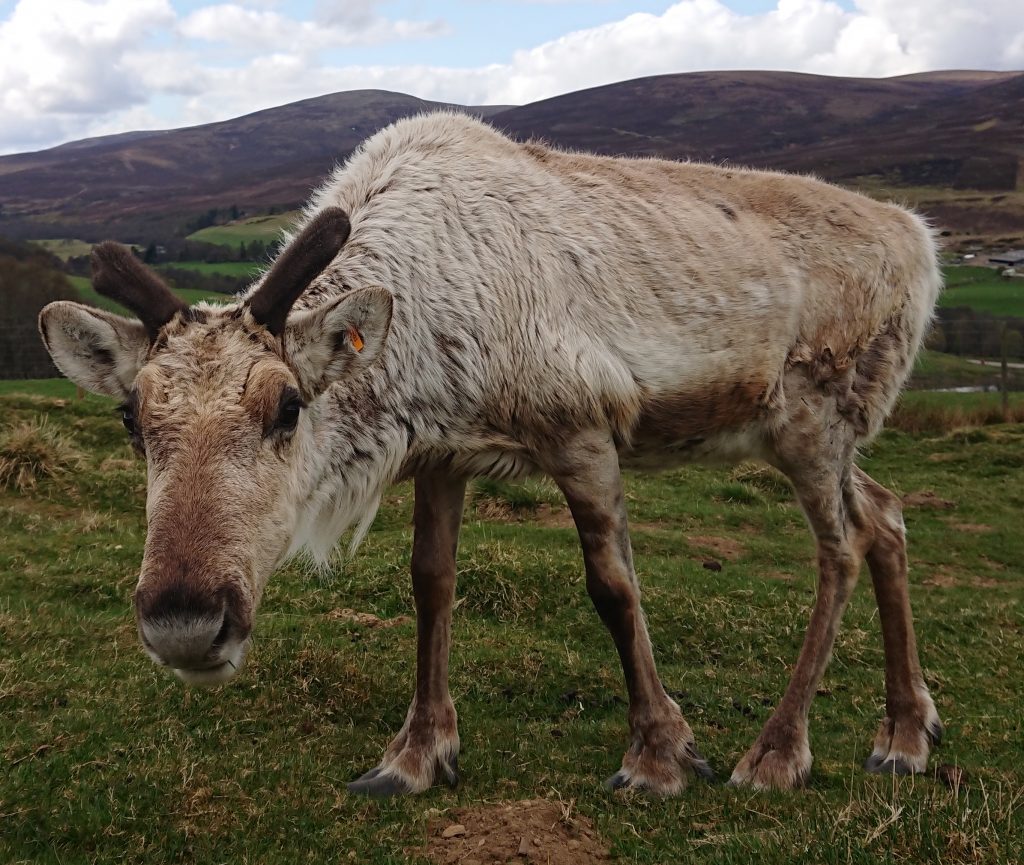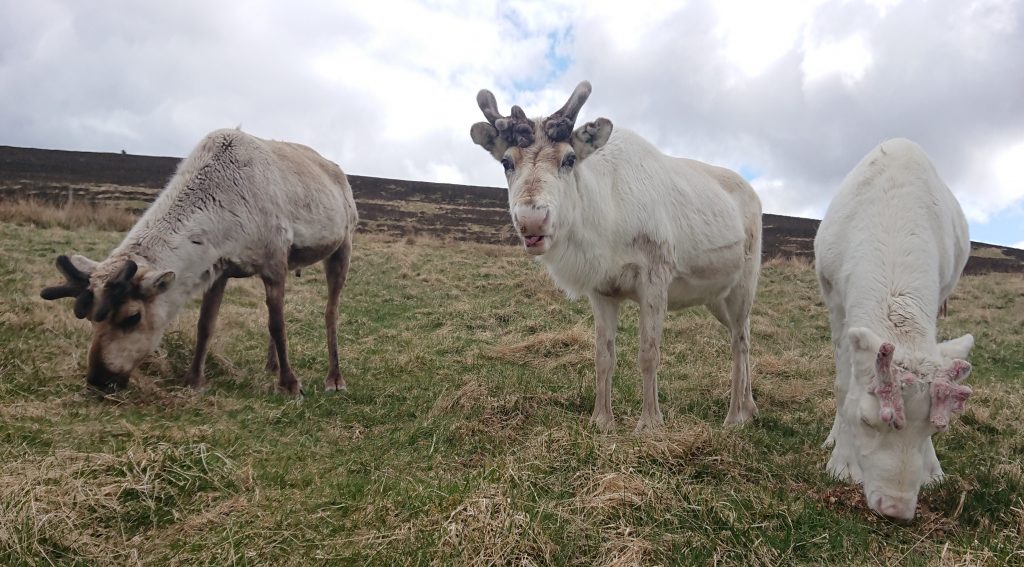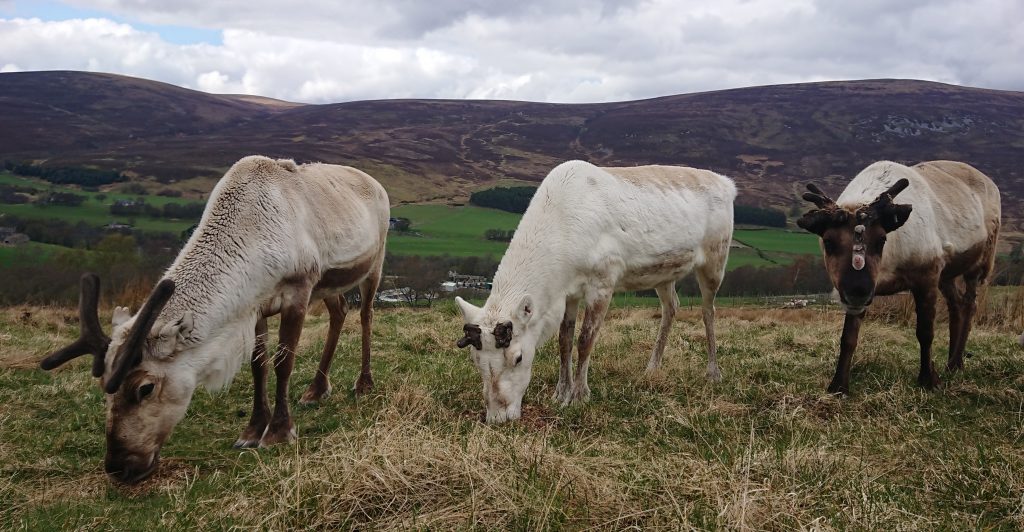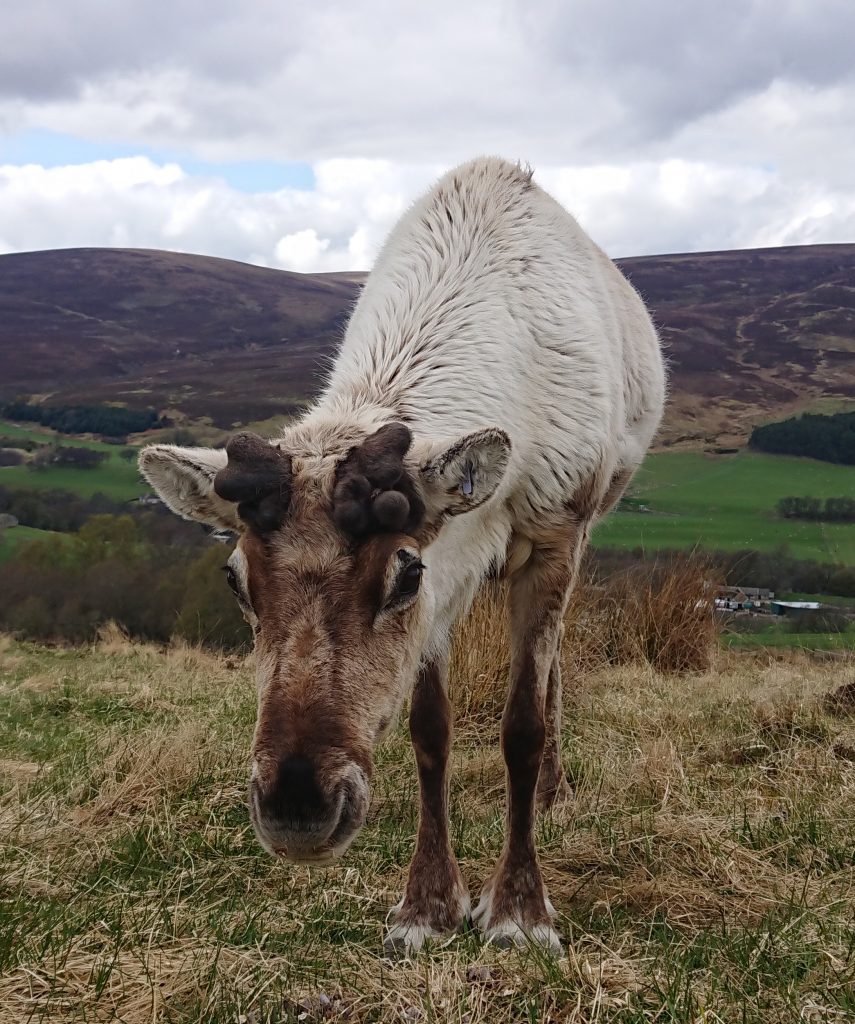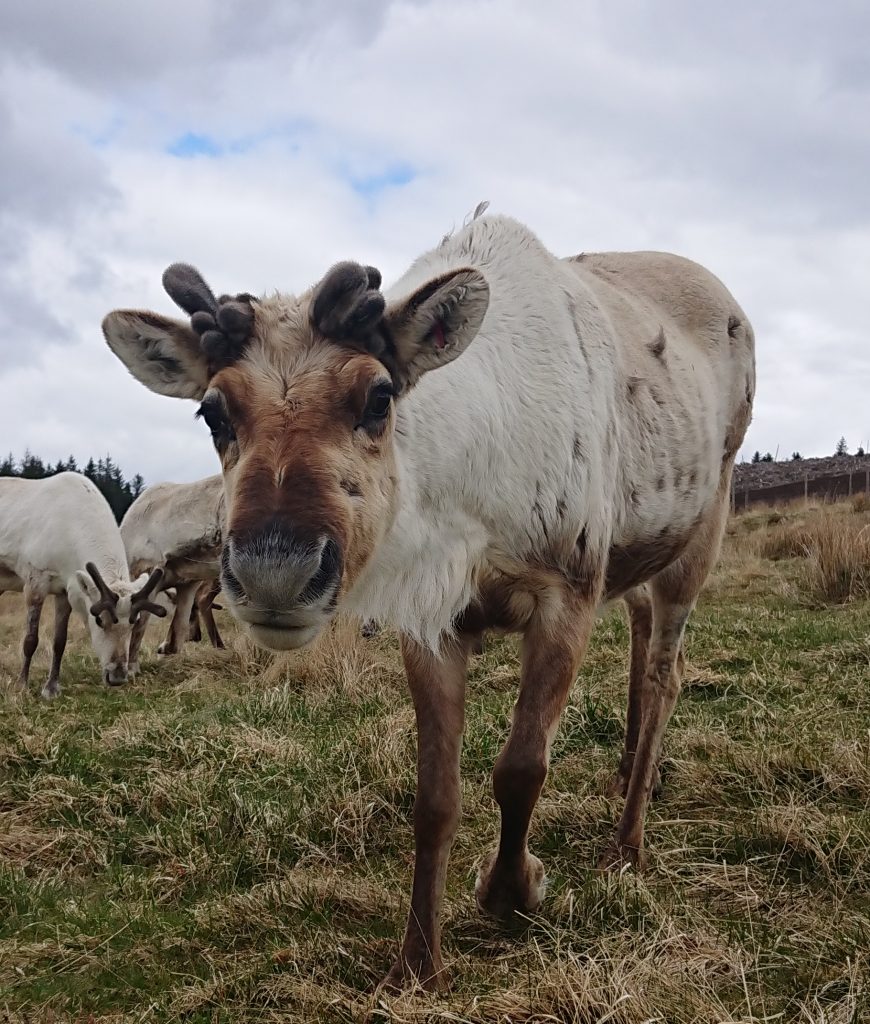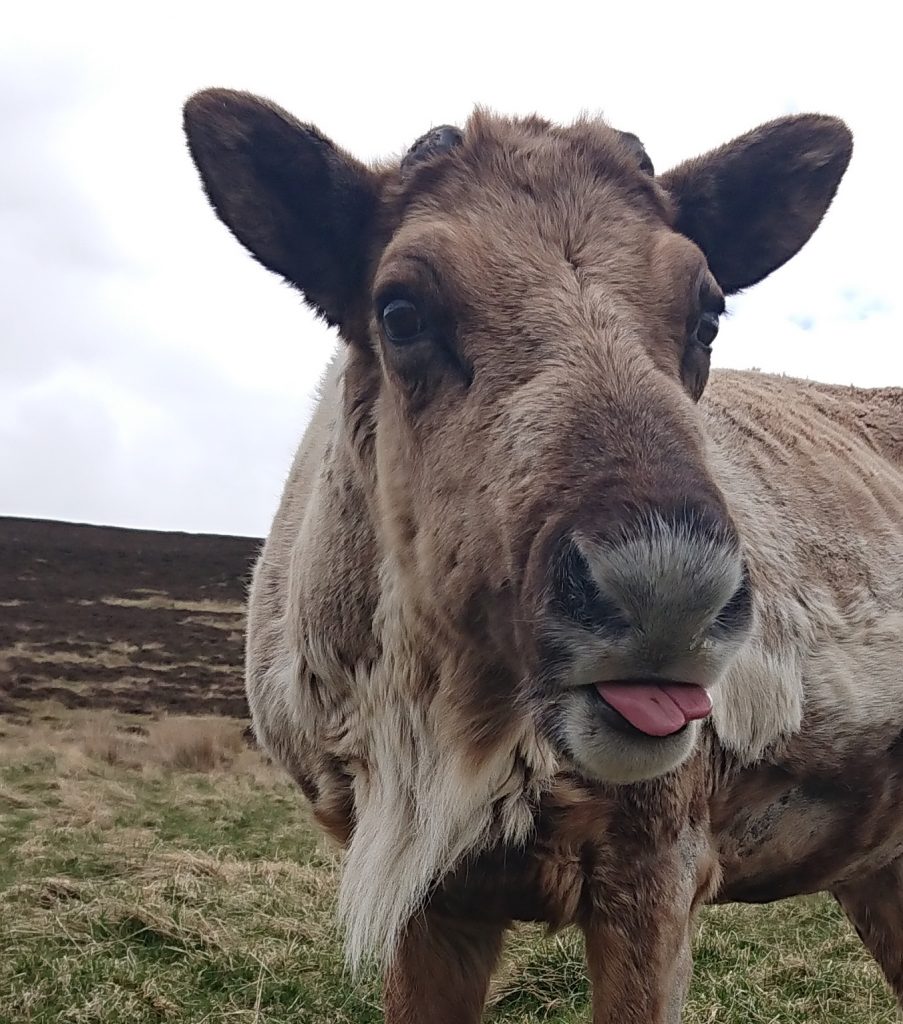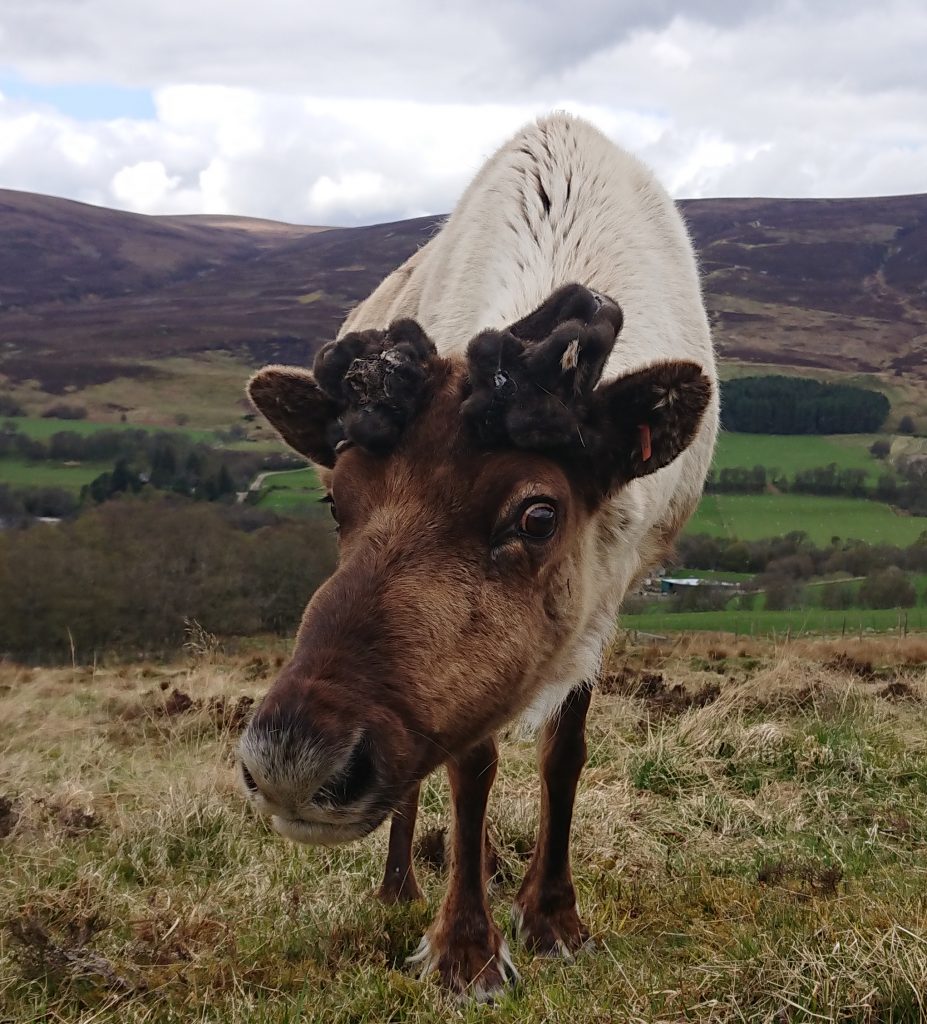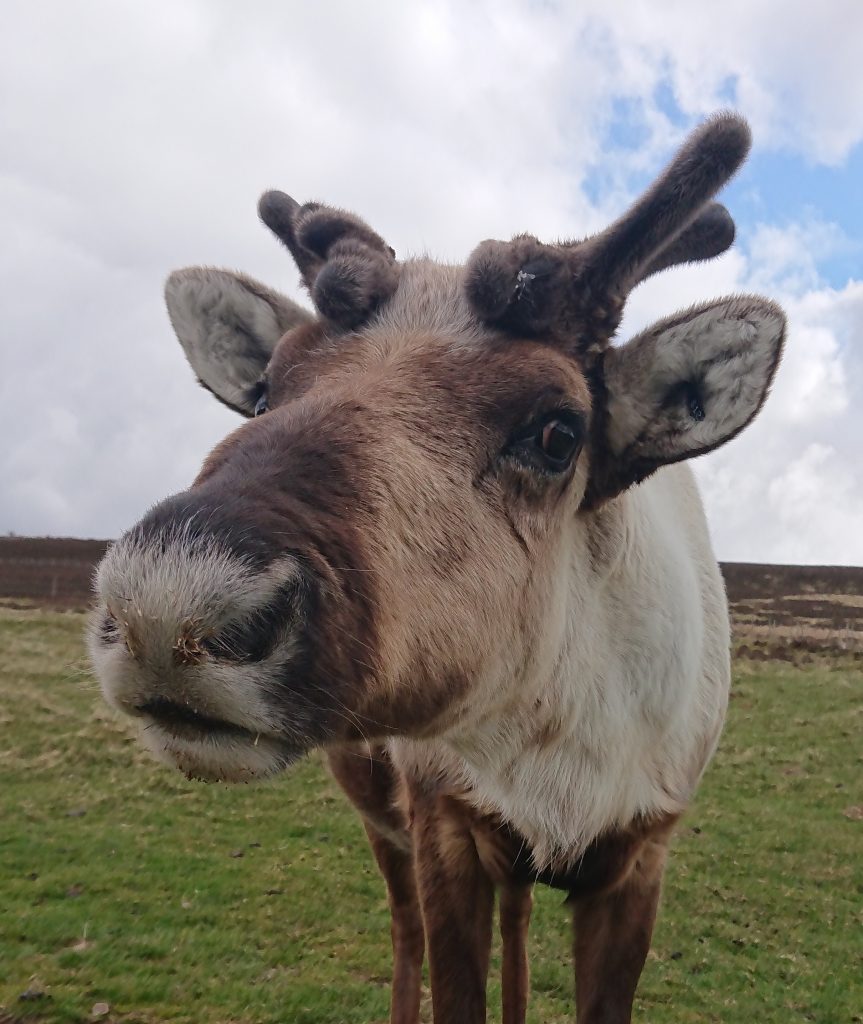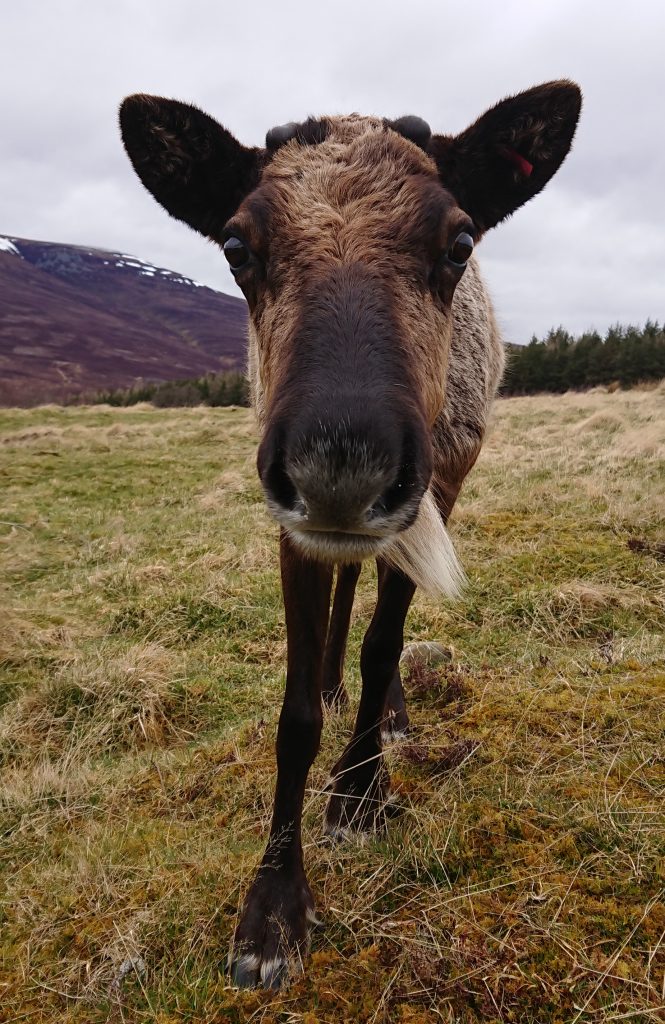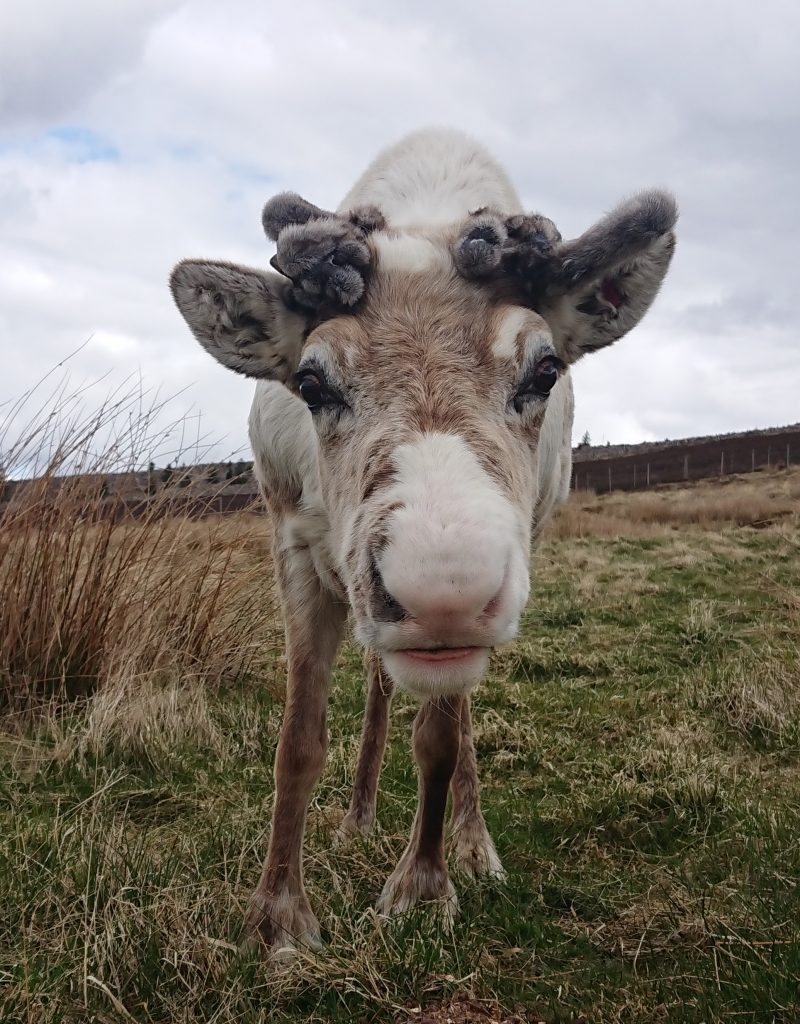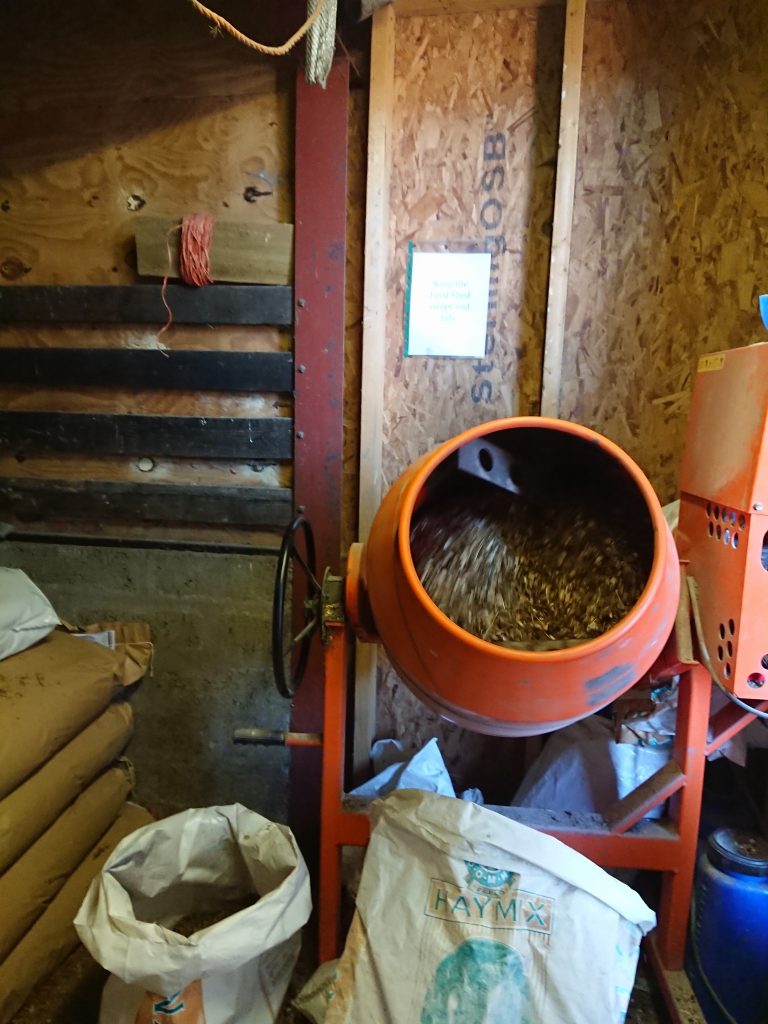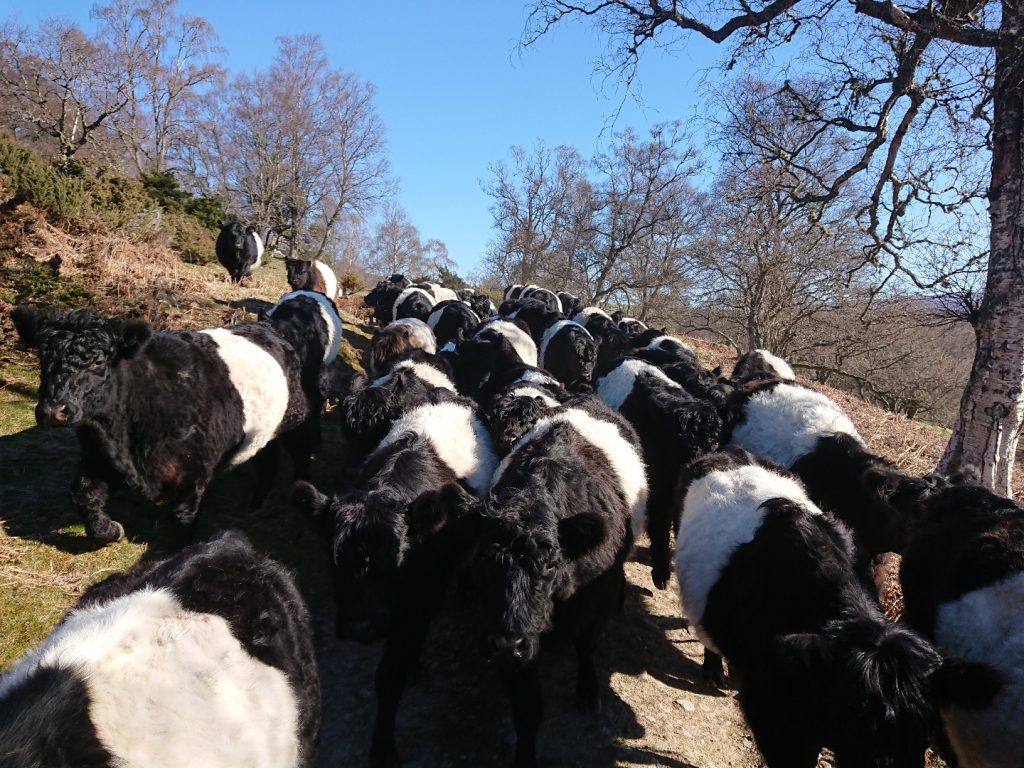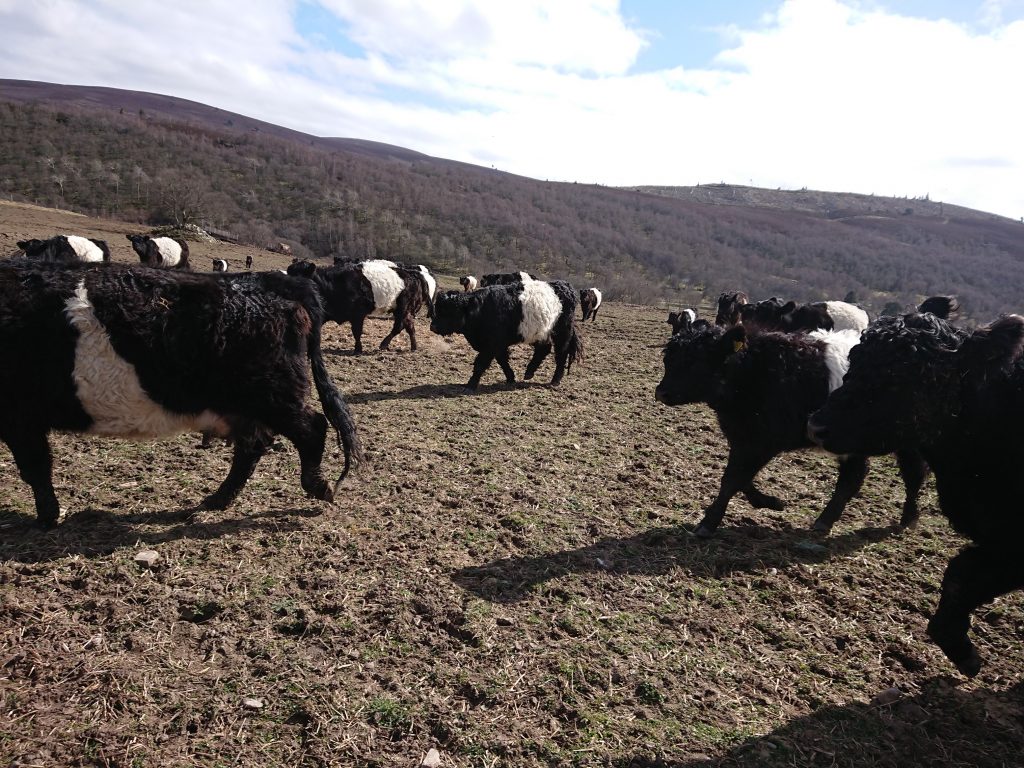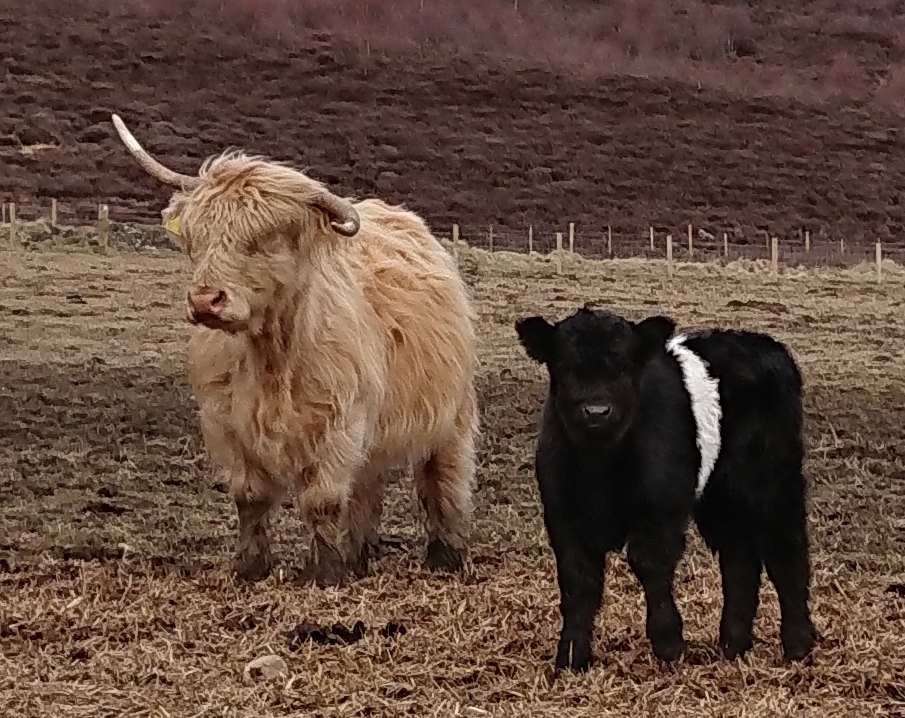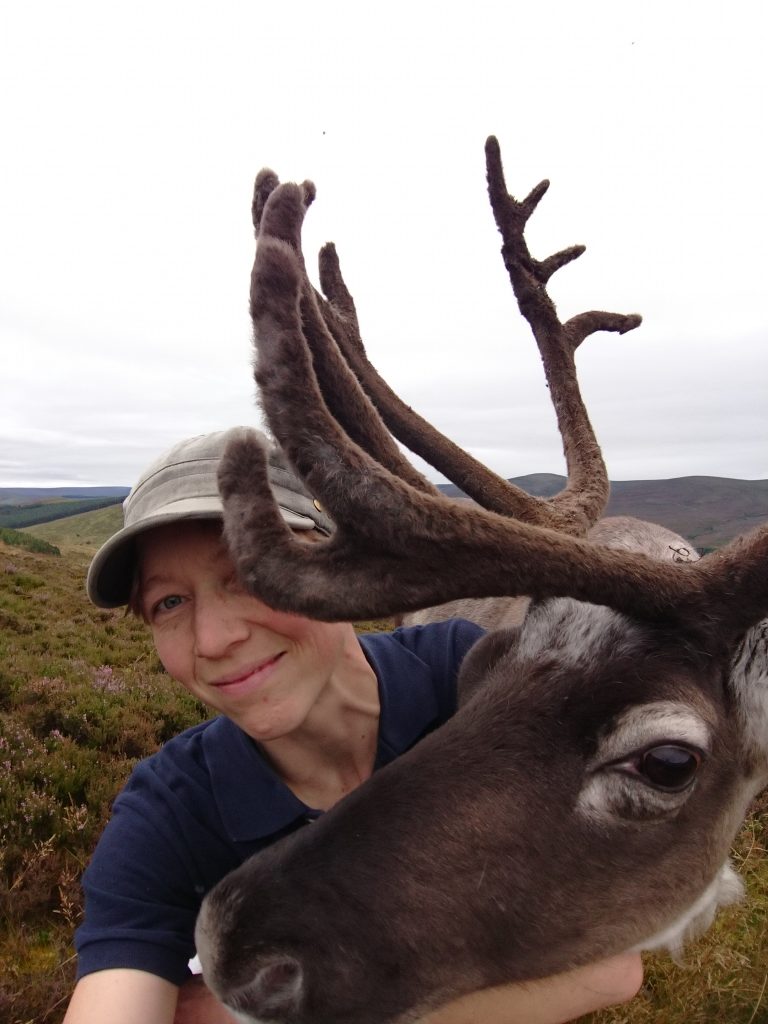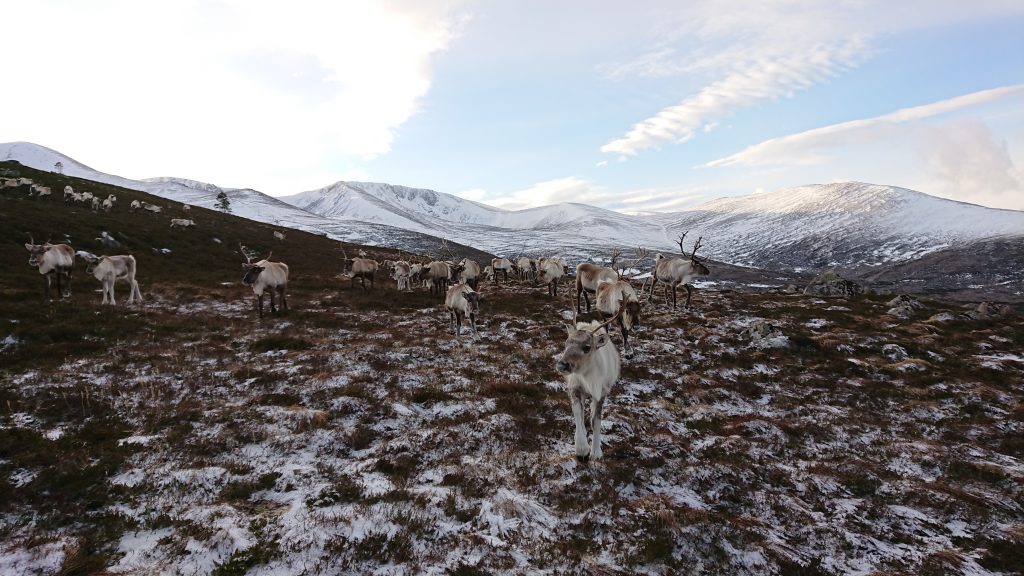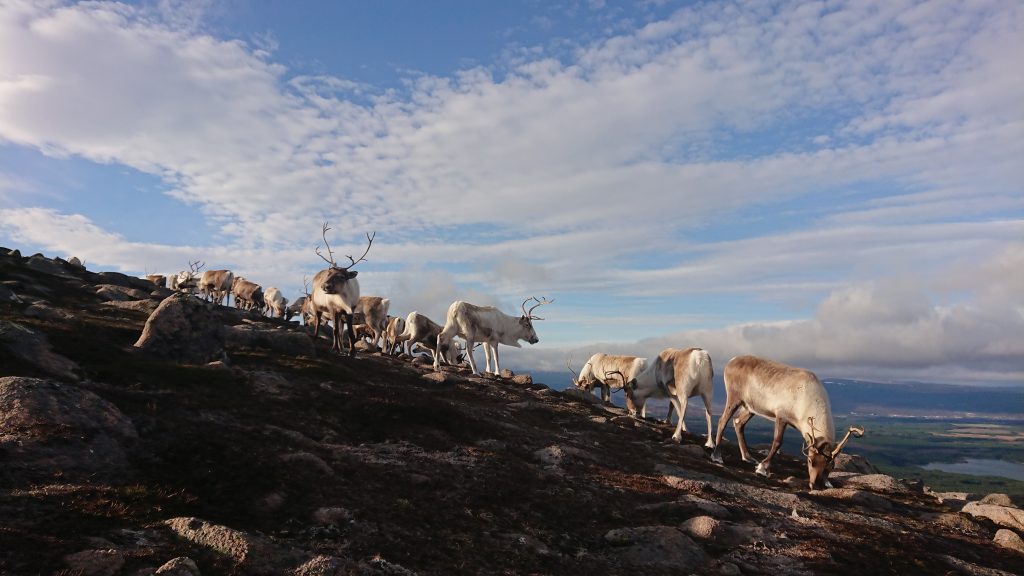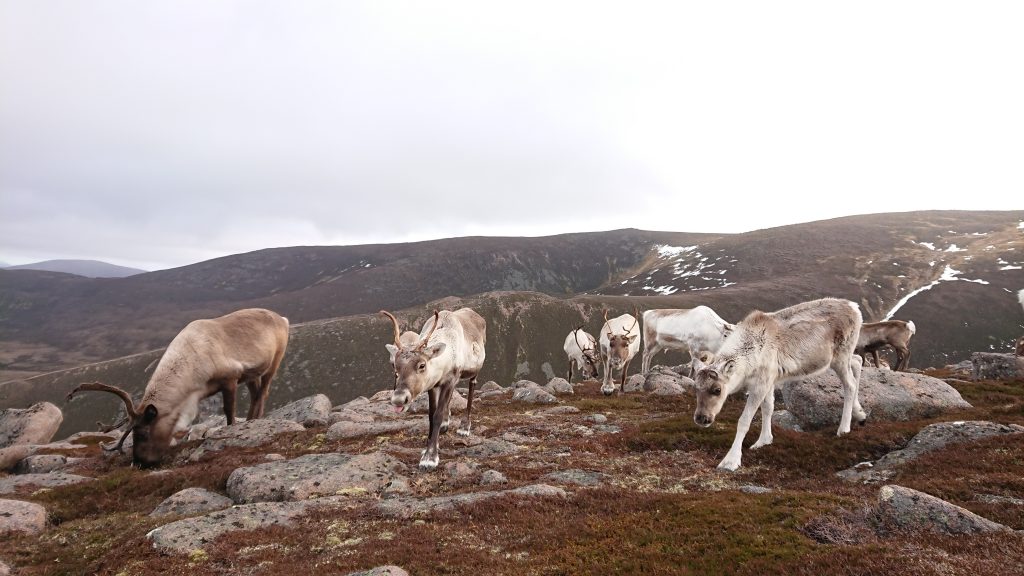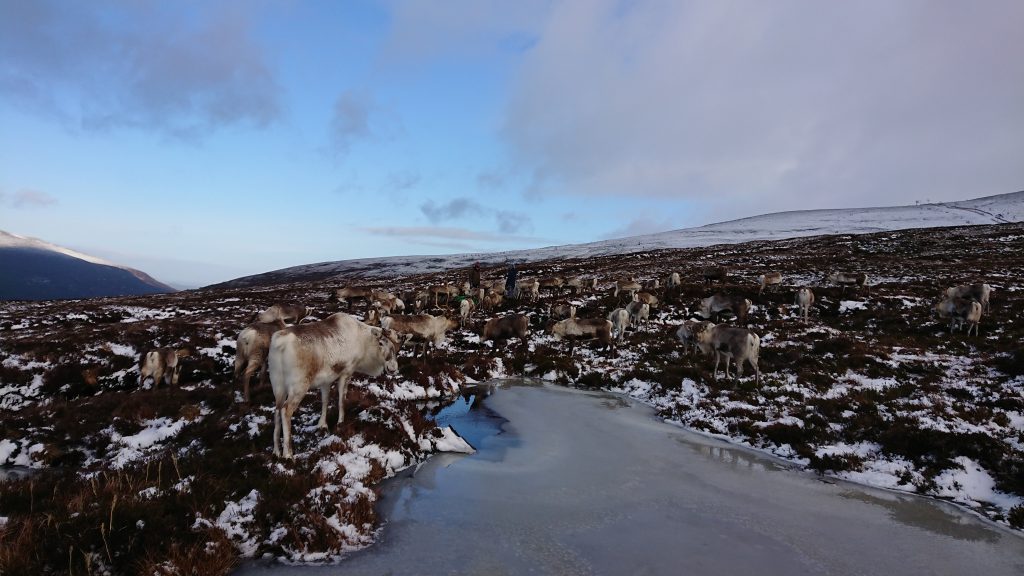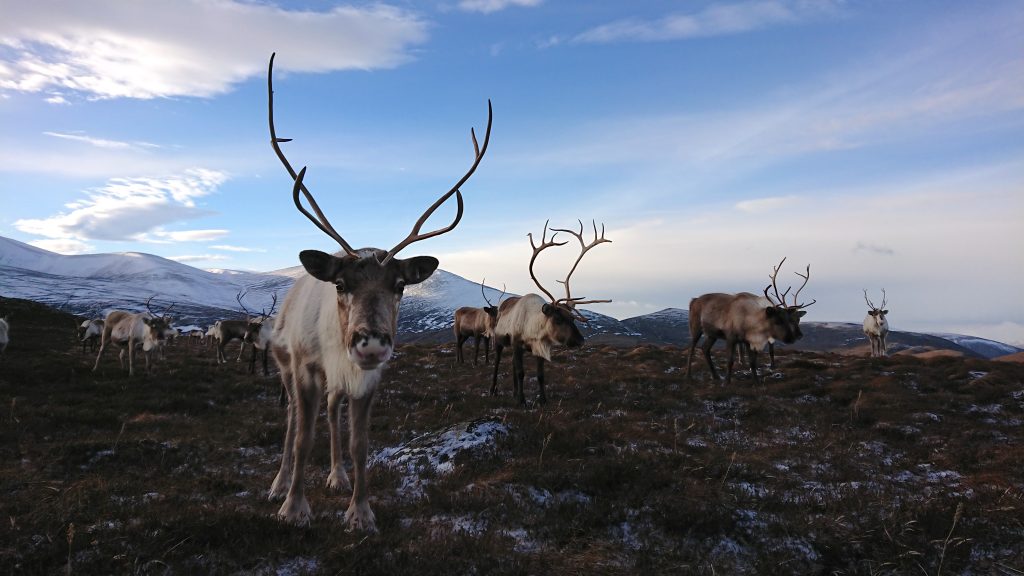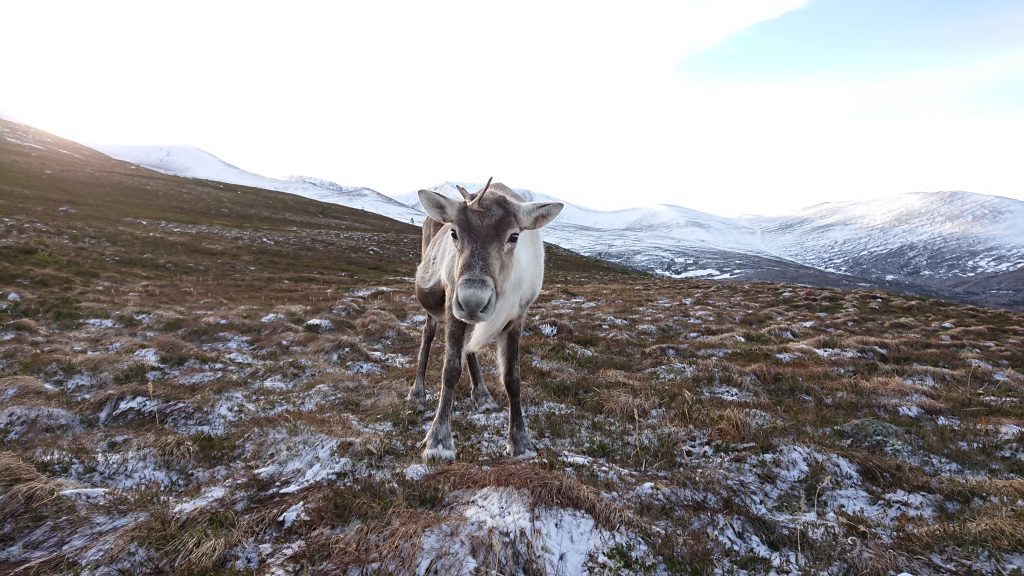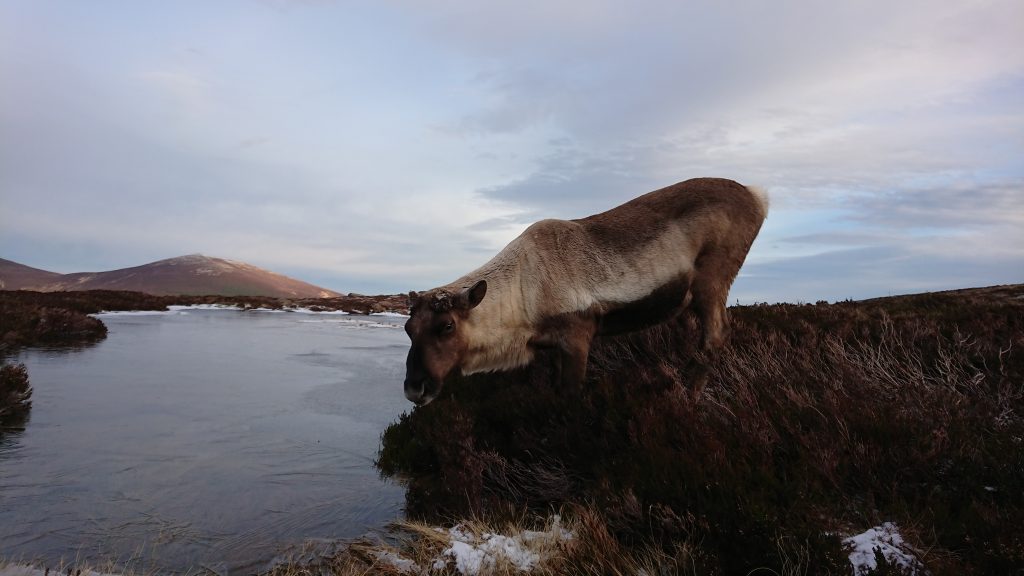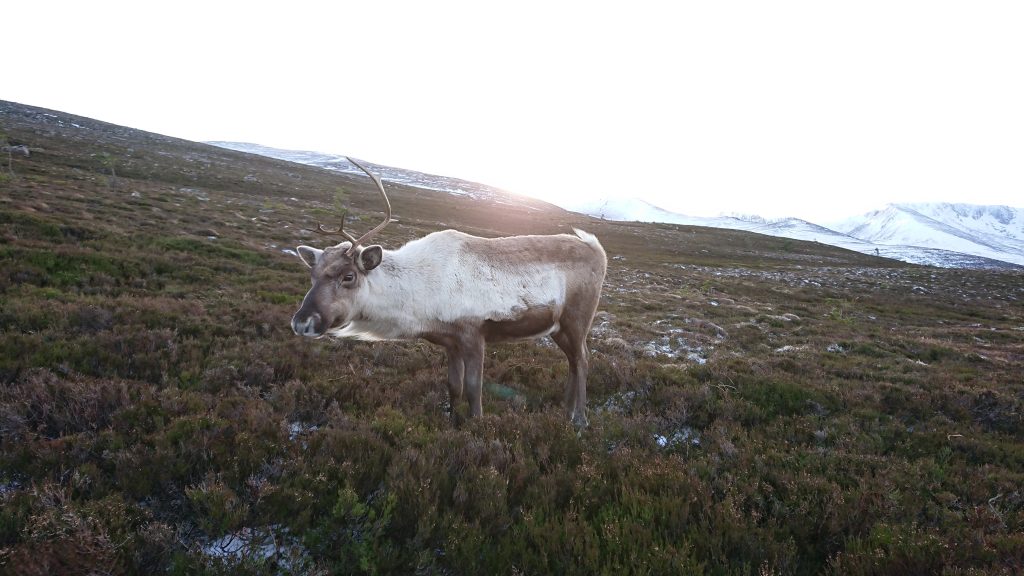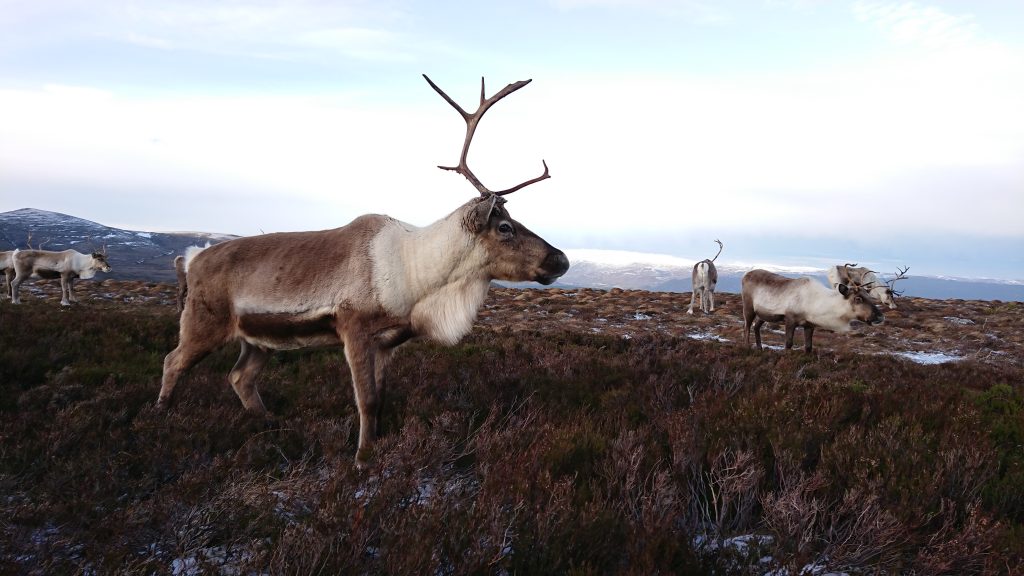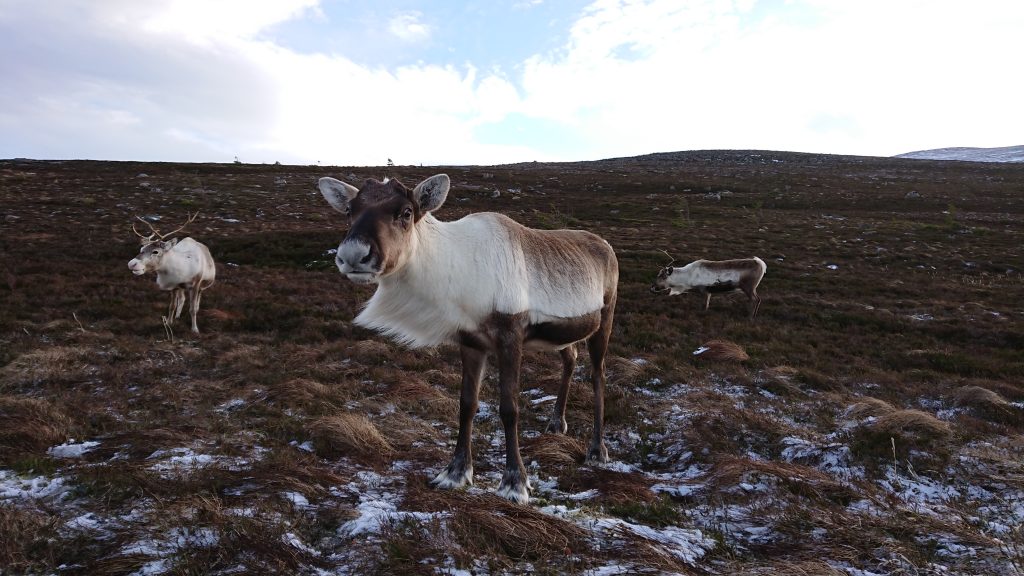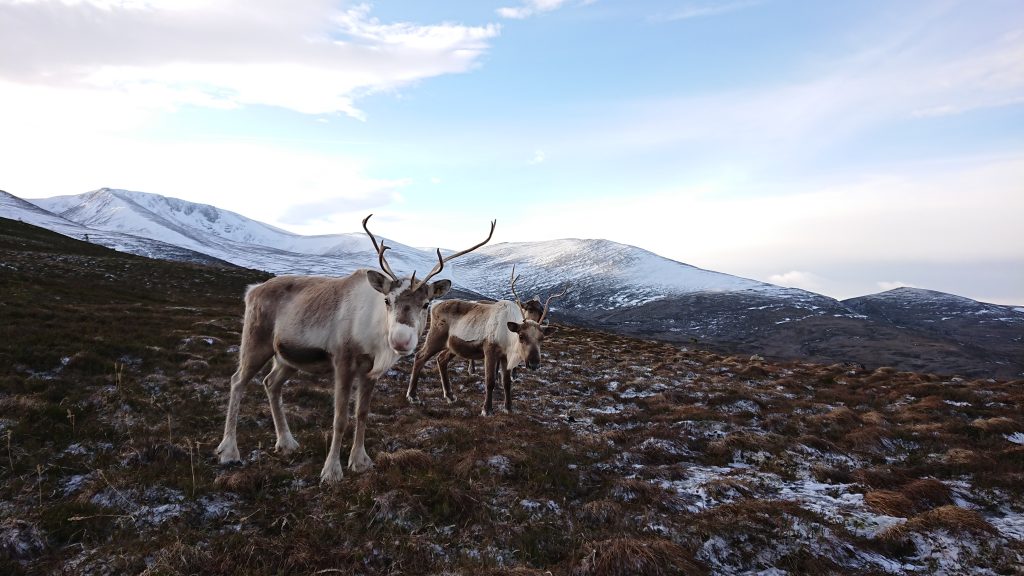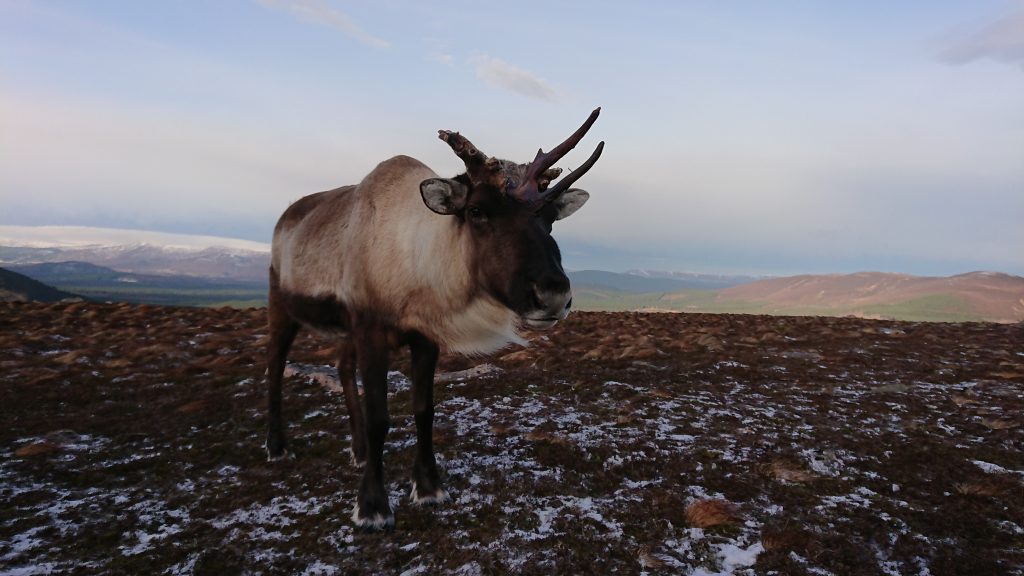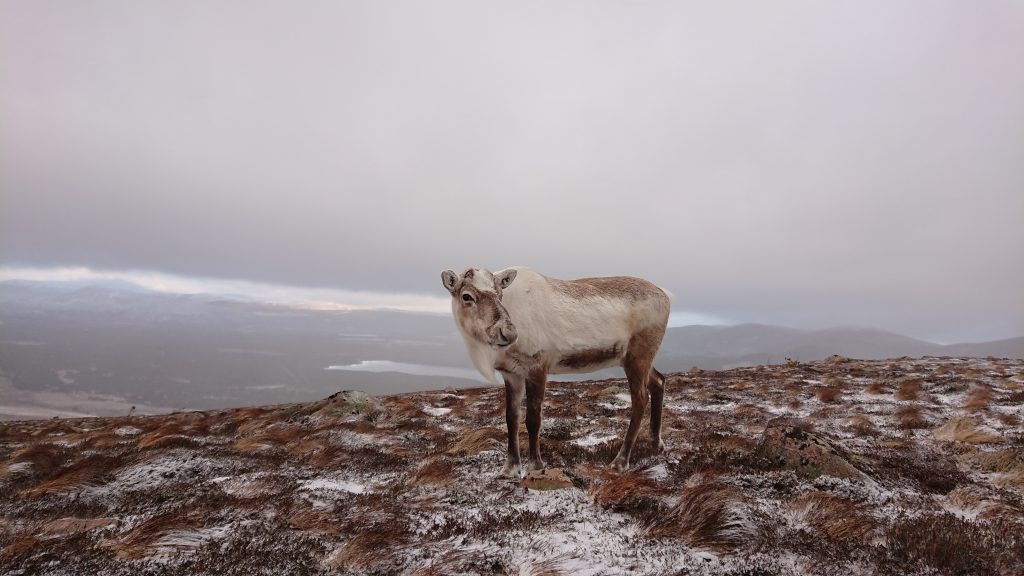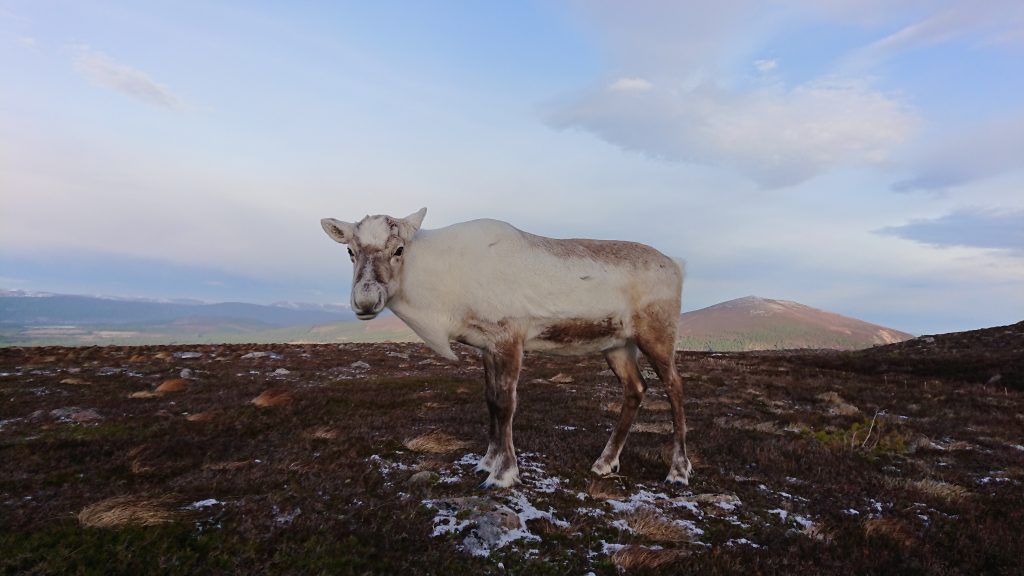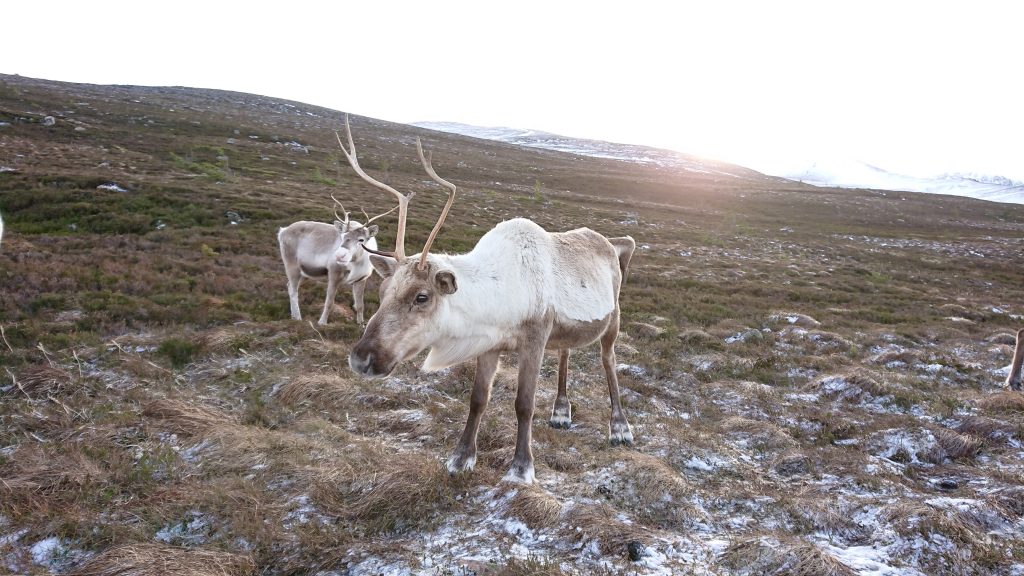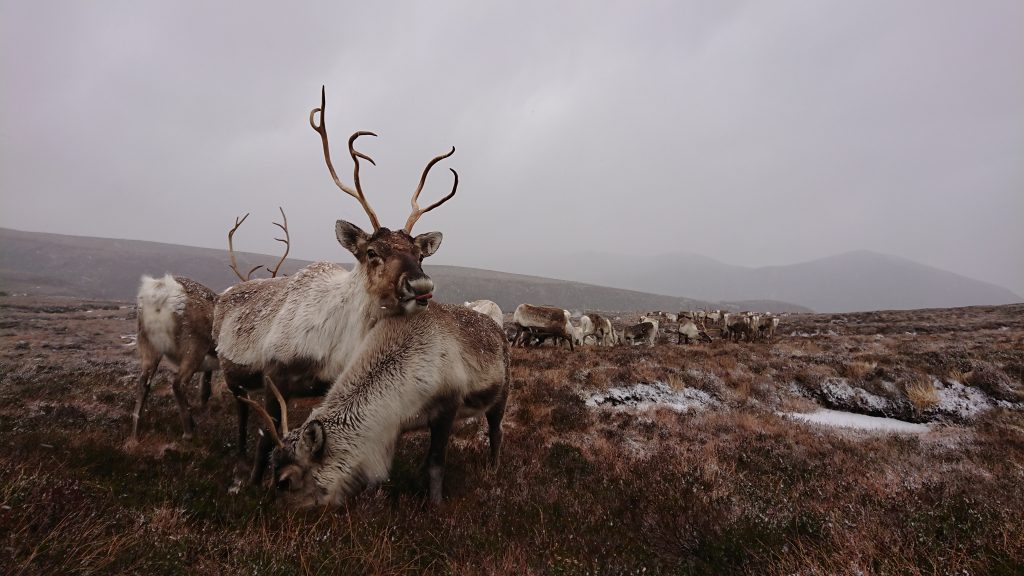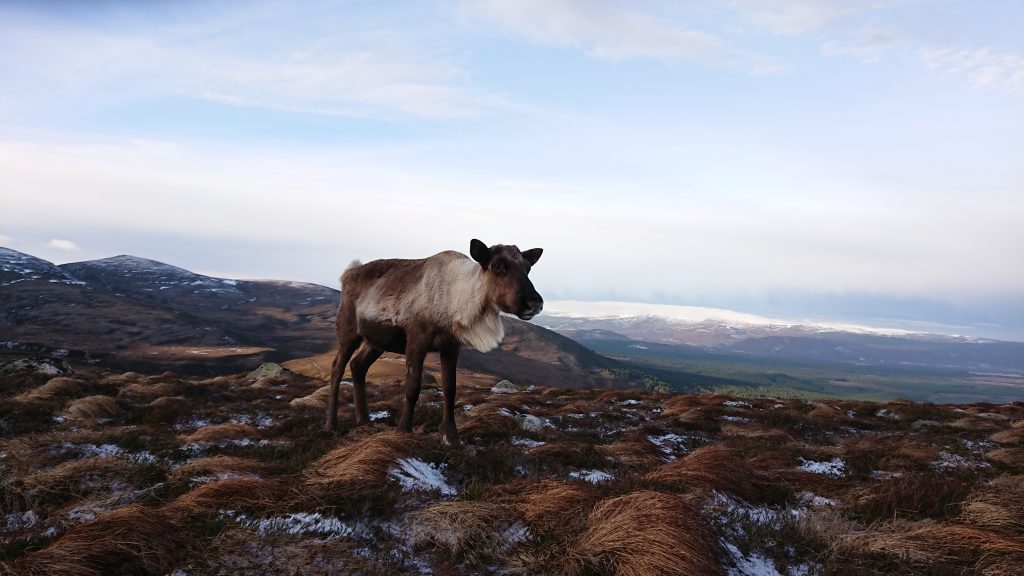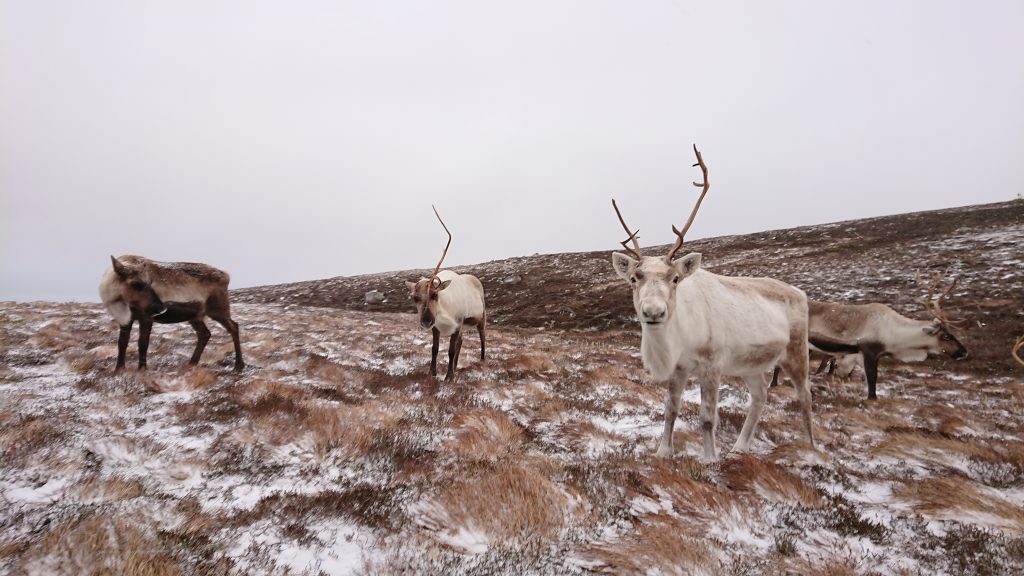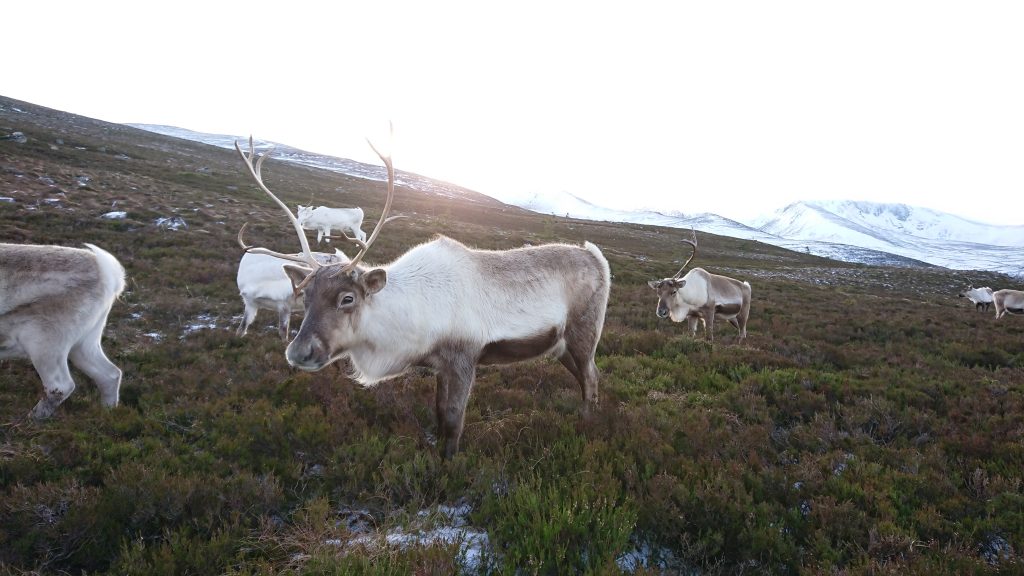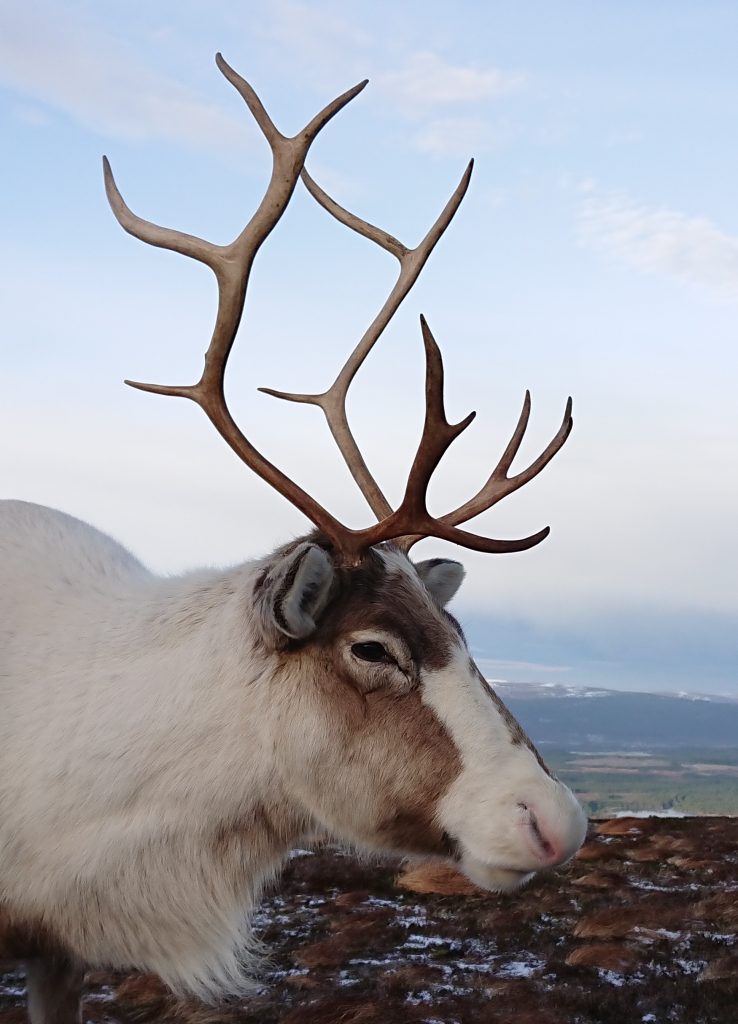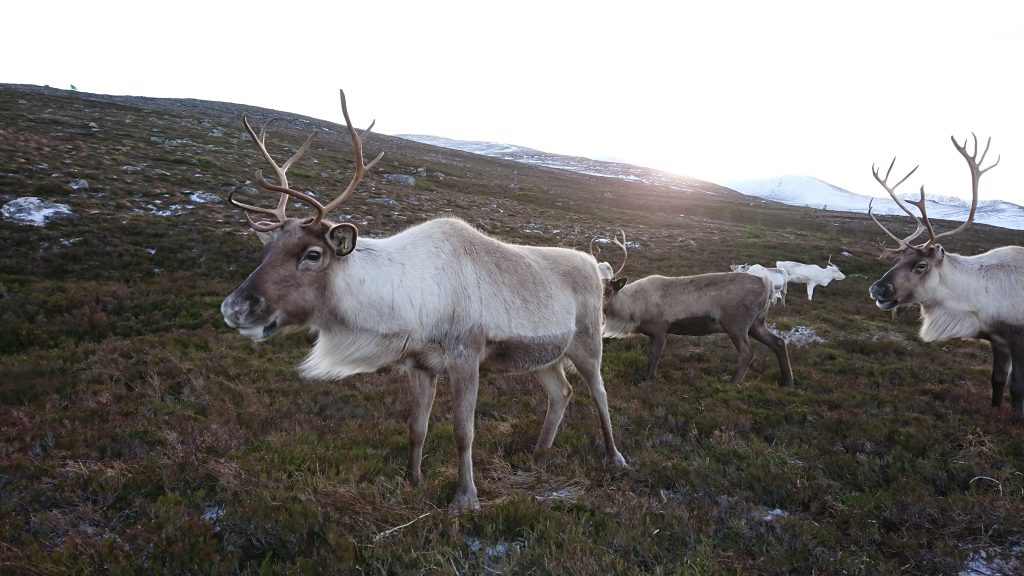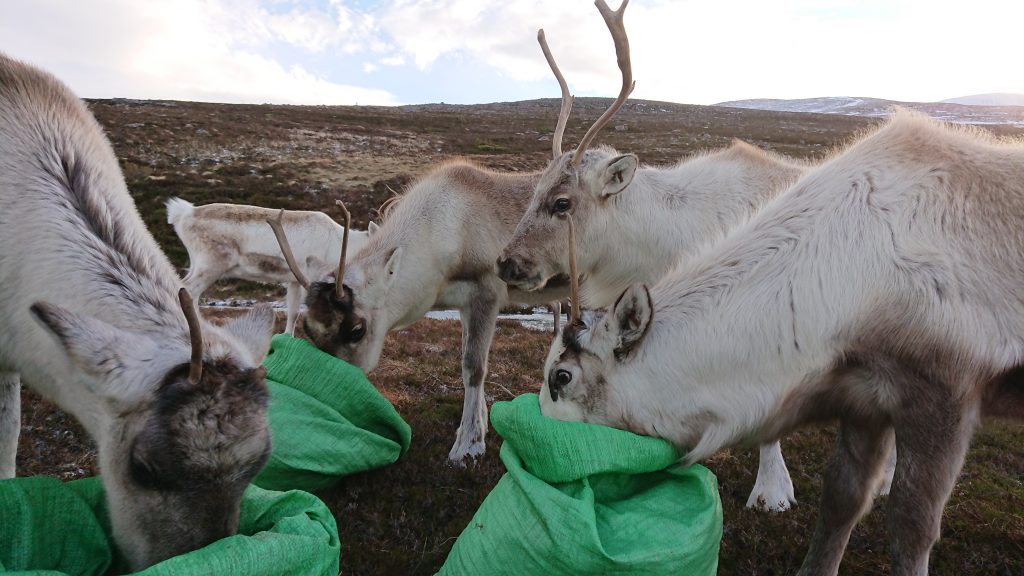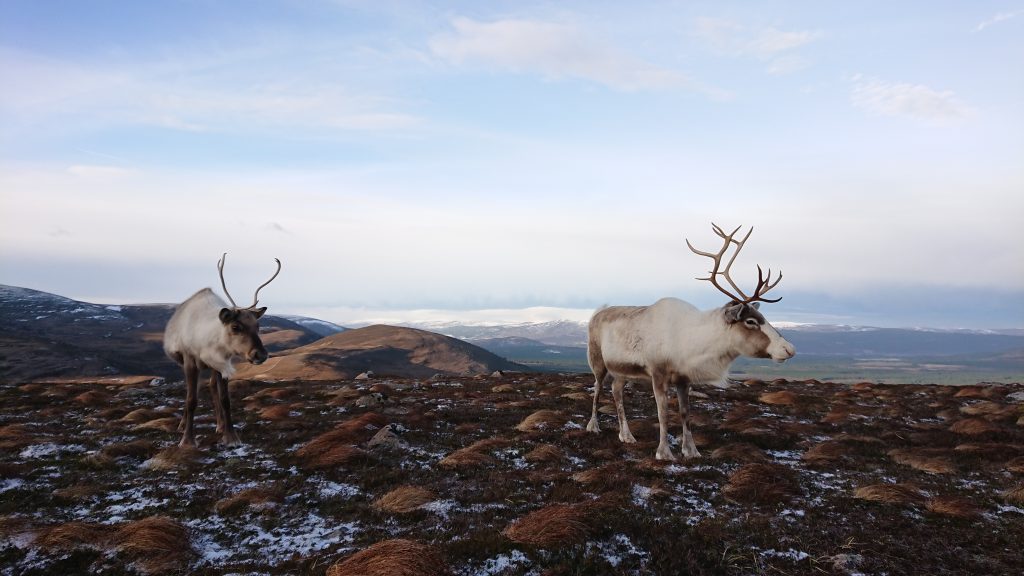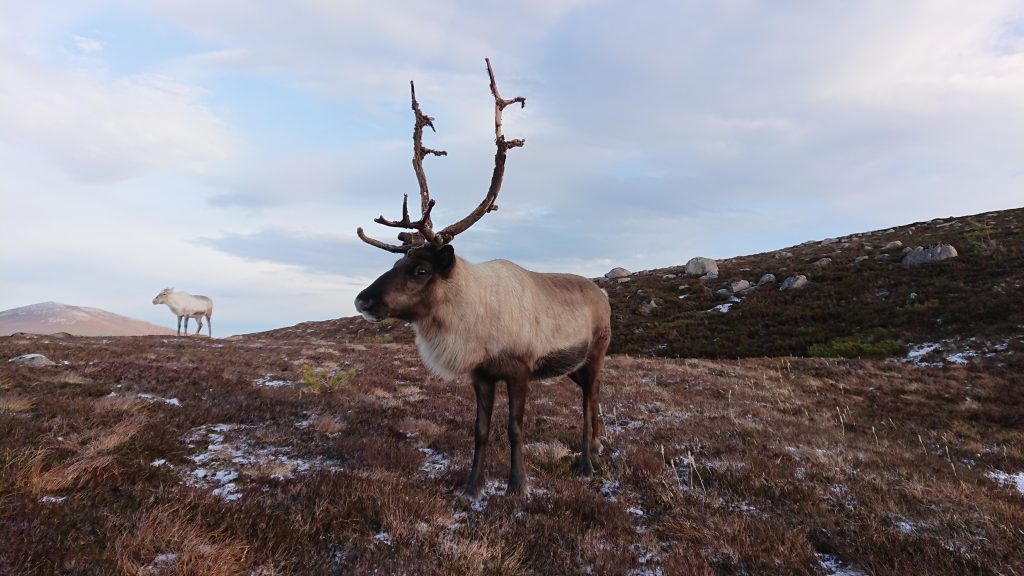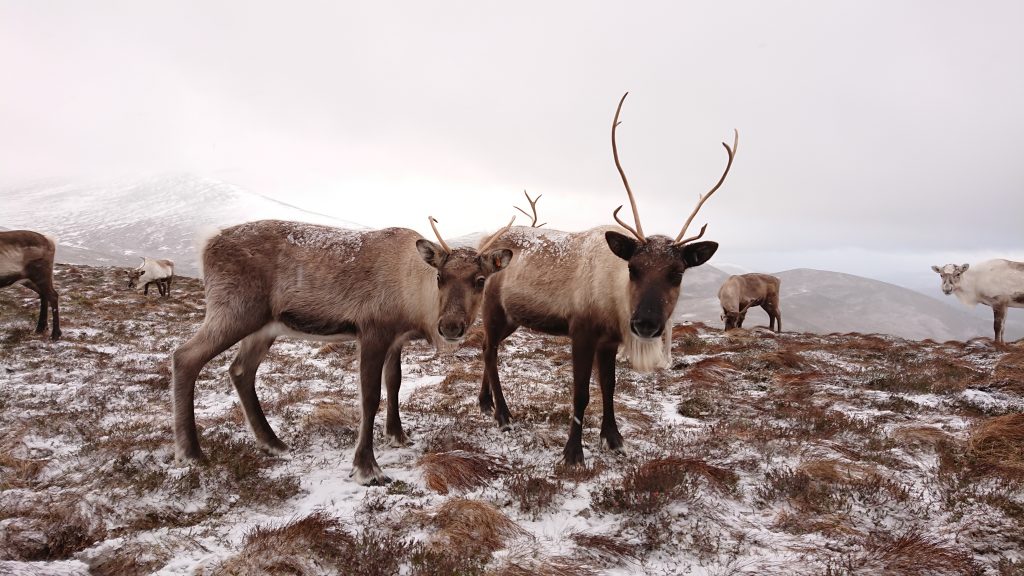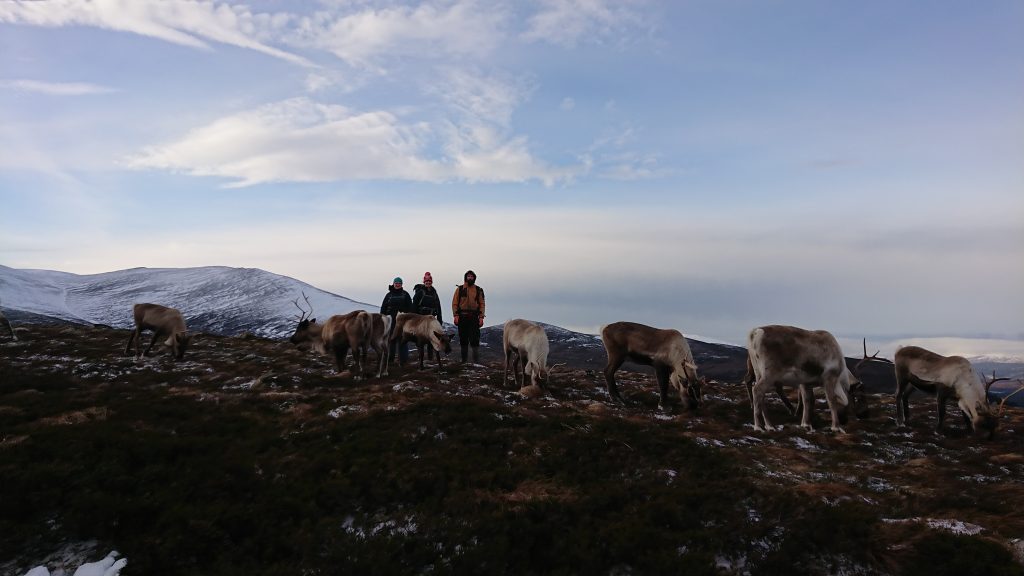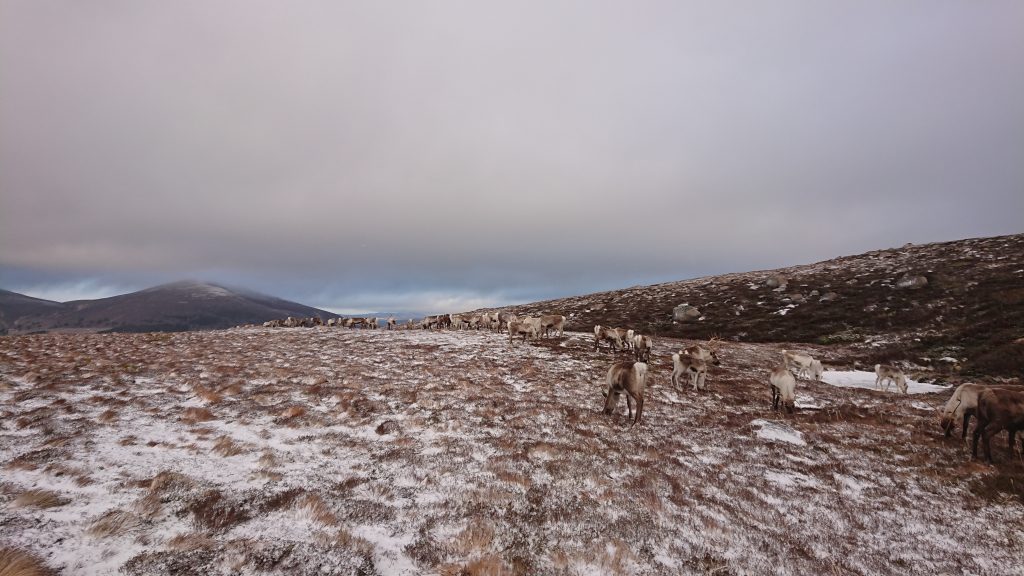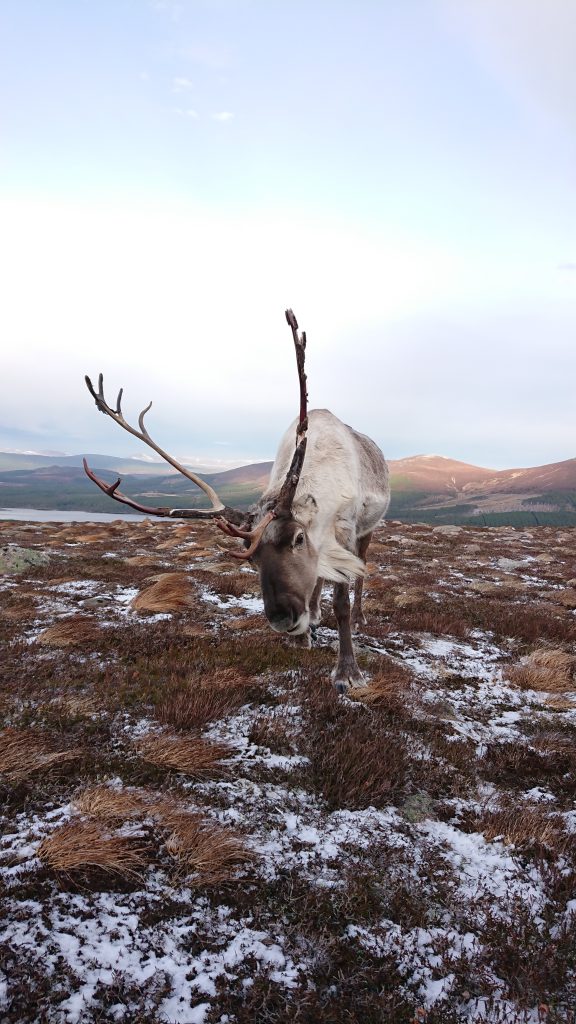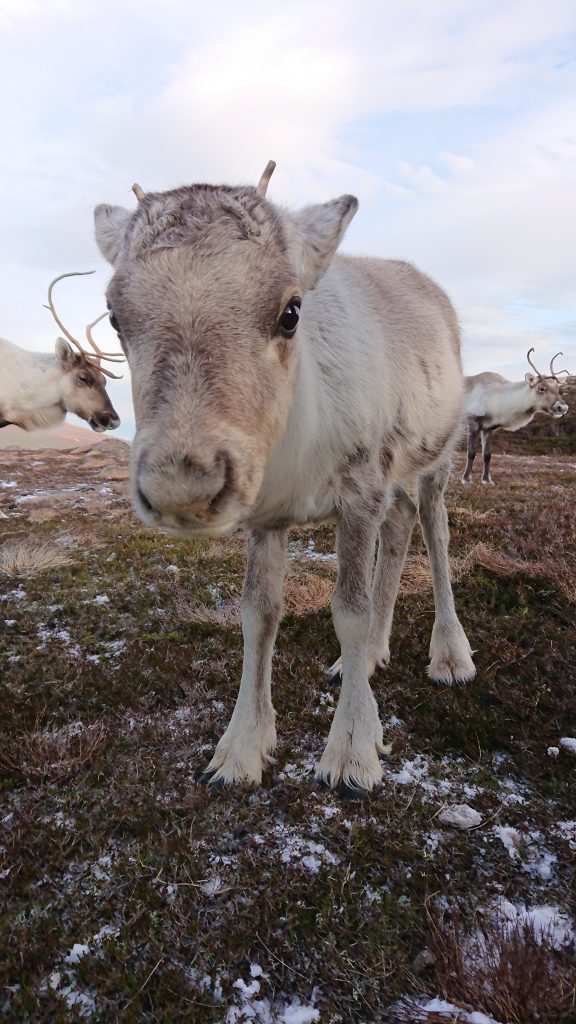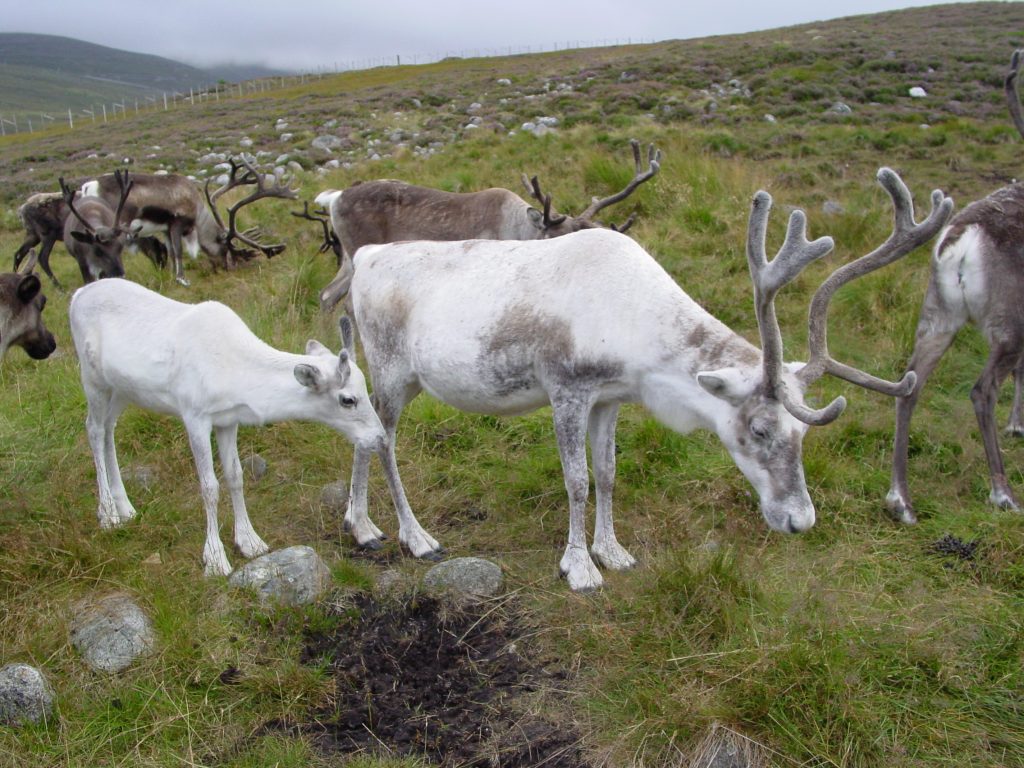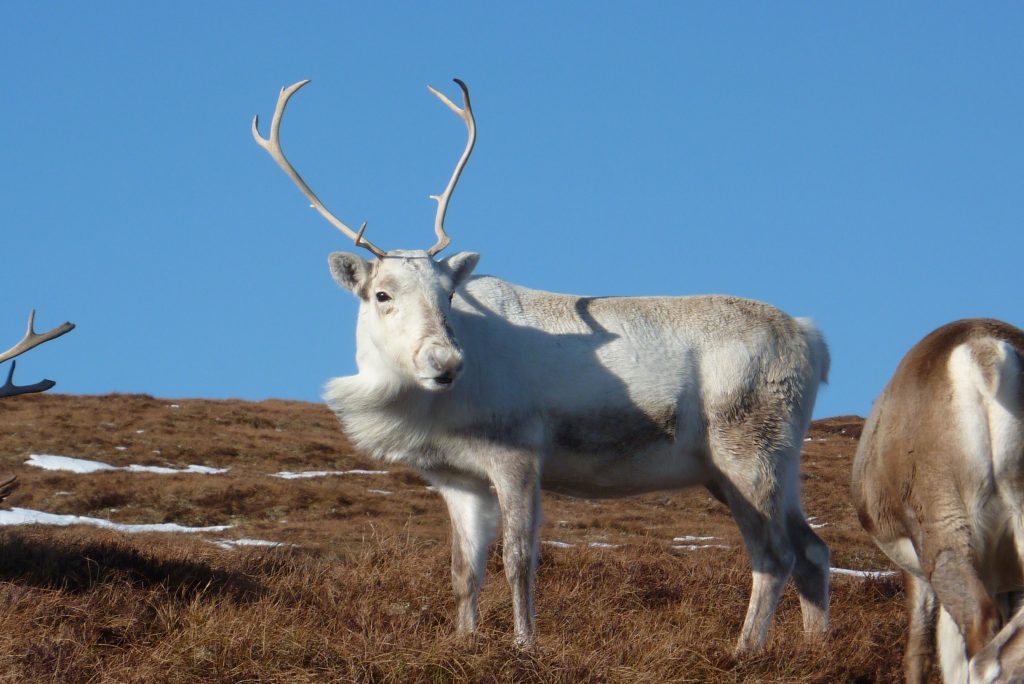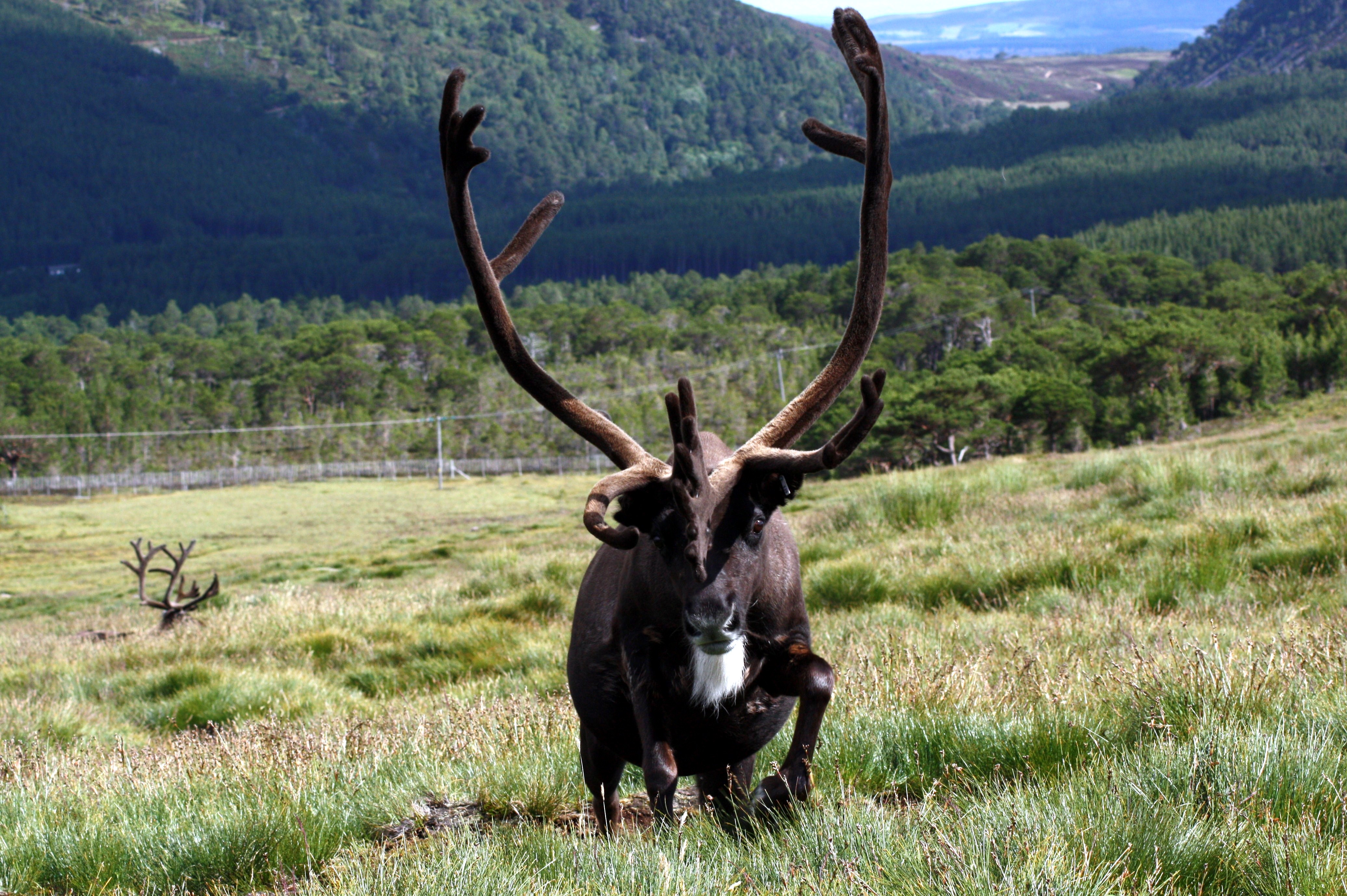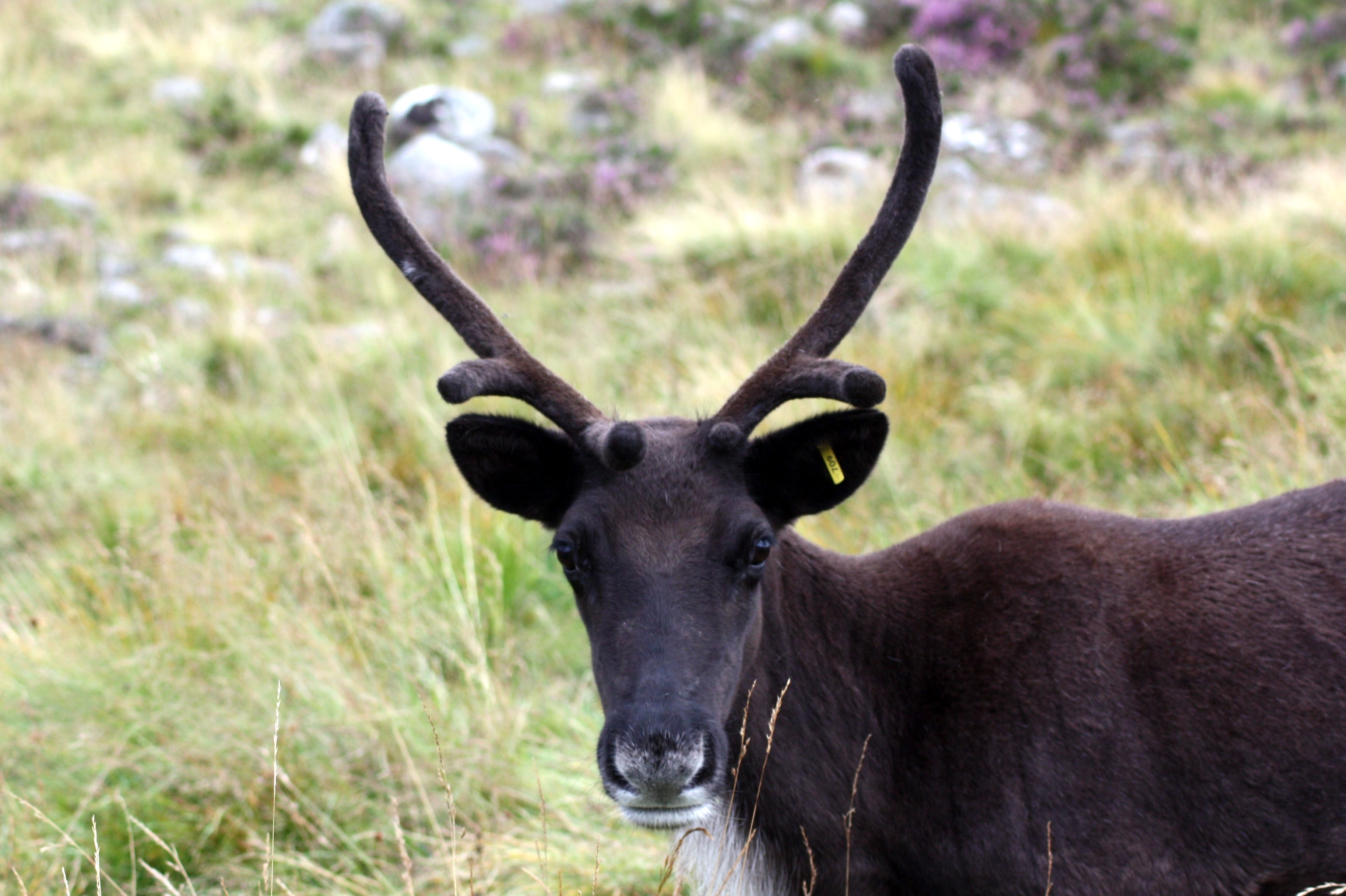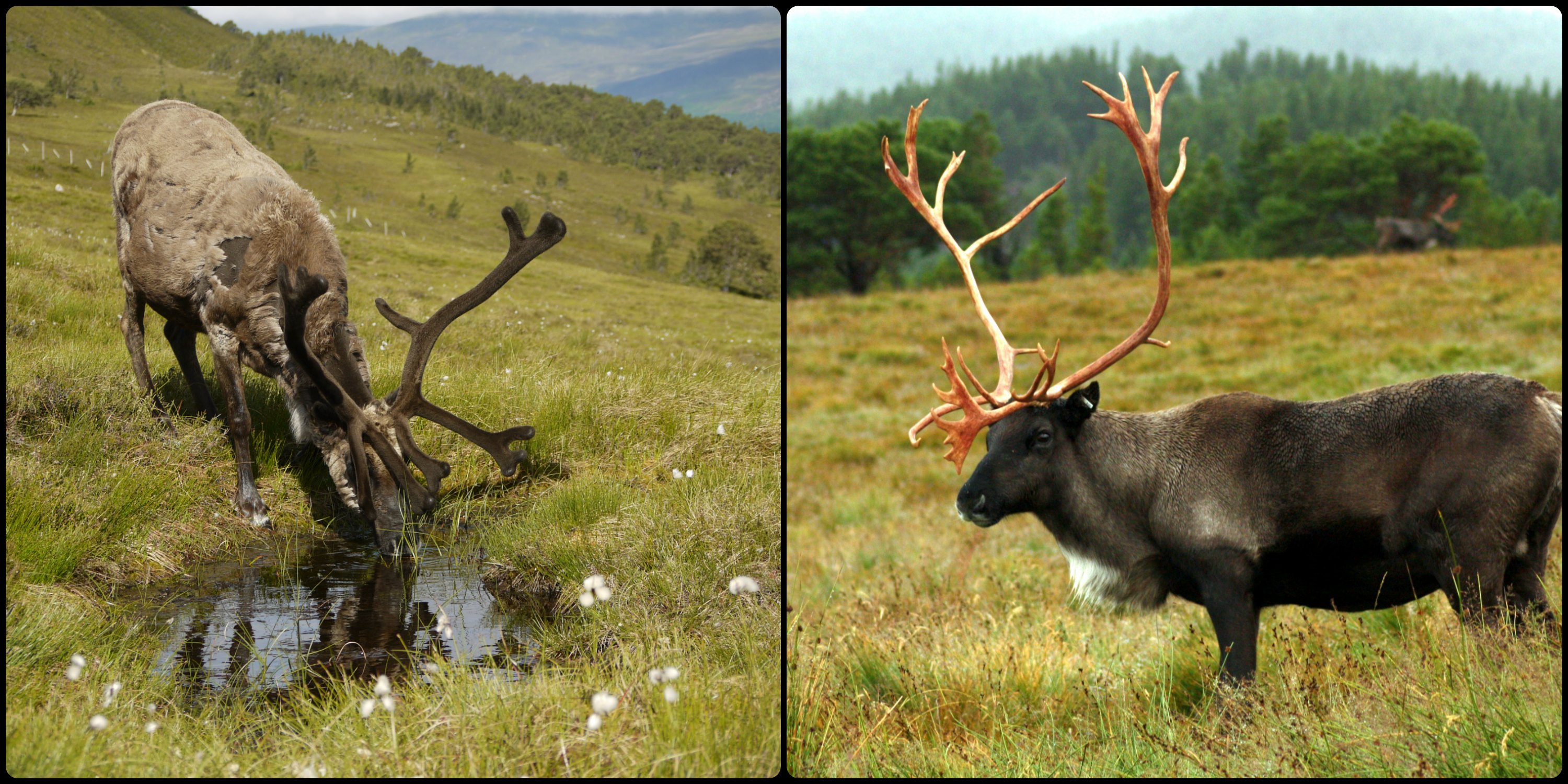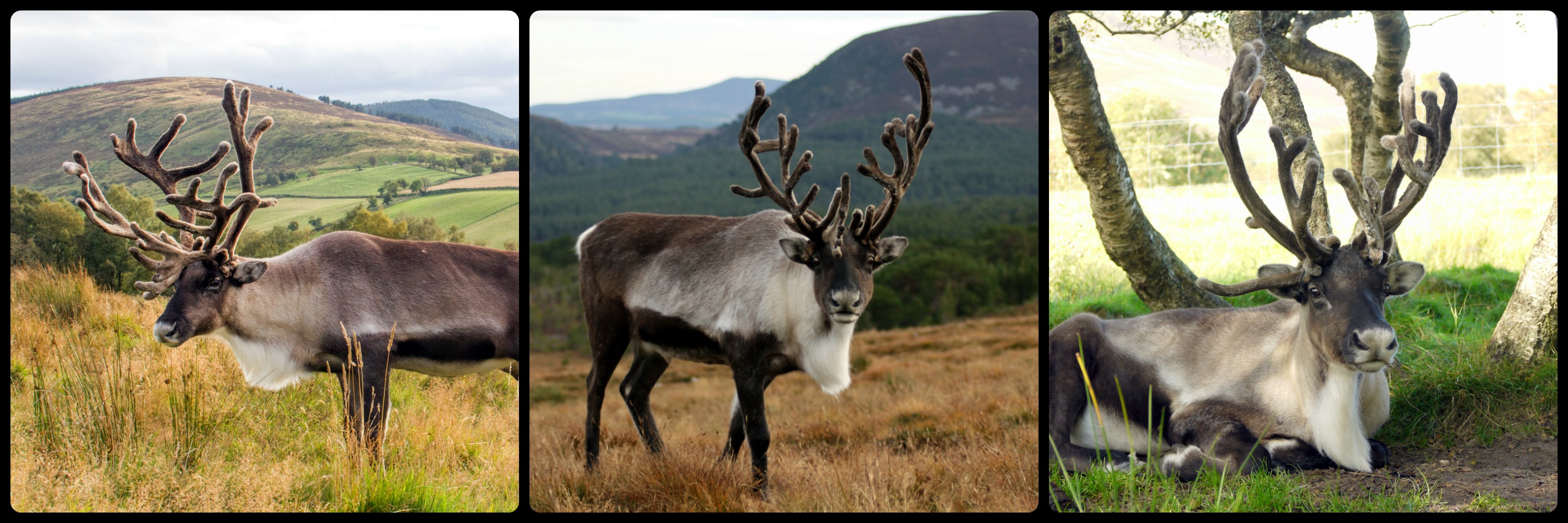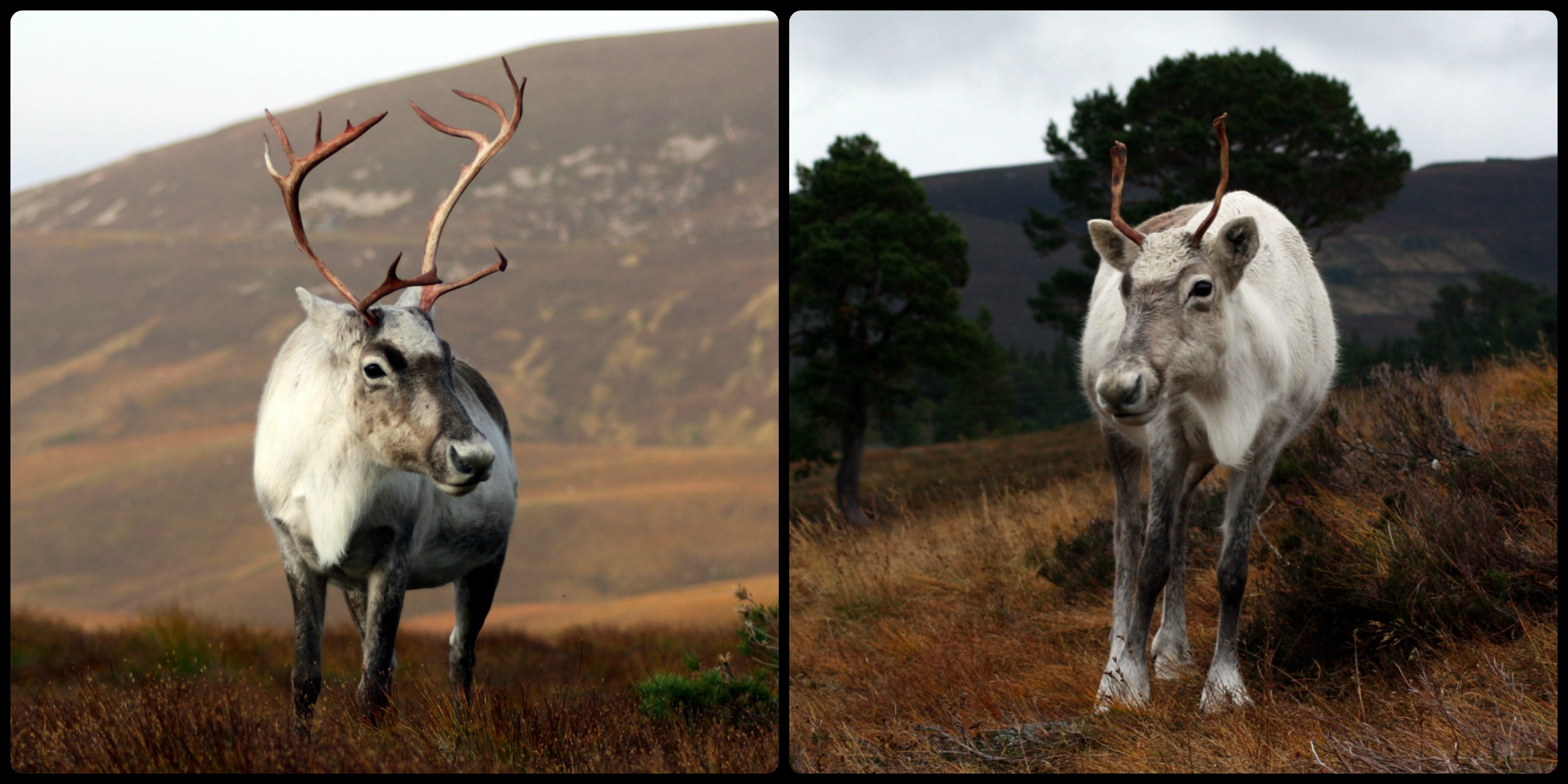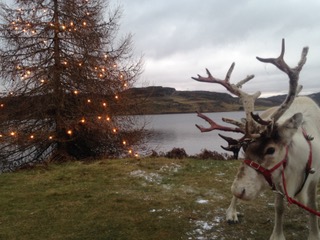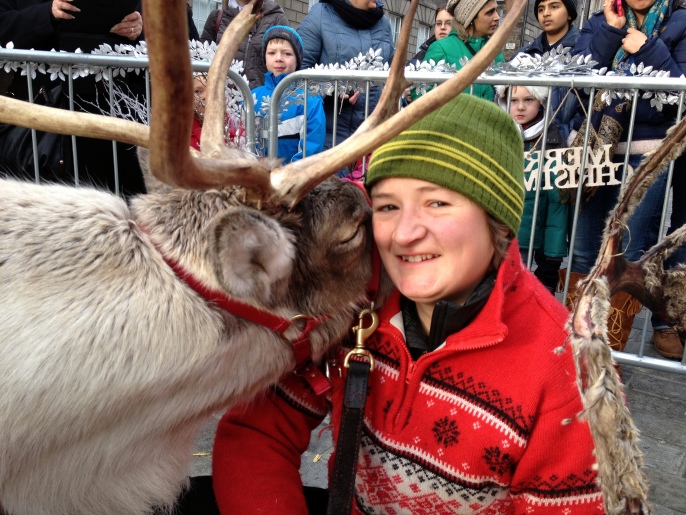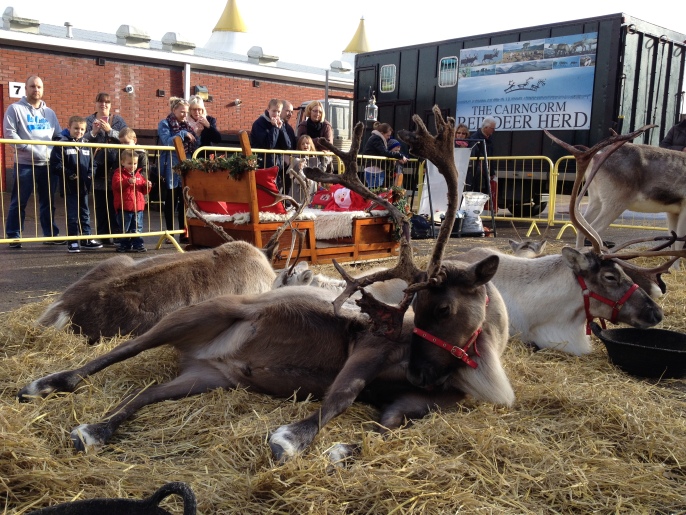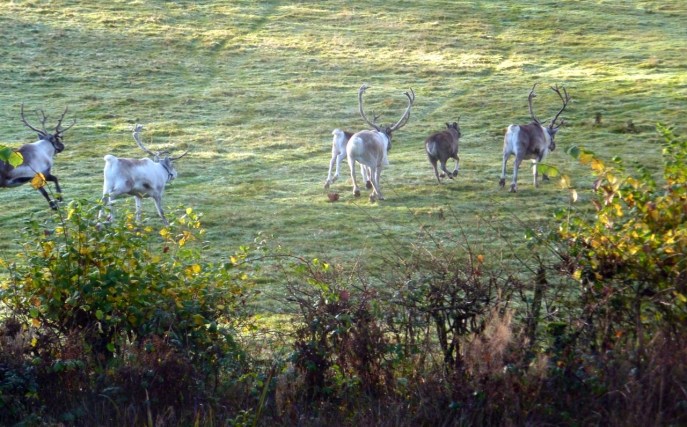We are always getting asked to take part in various filming and photography projects so nothing really surprises us anymore when someone sends an email or gives us a call with a slightly quirky request.
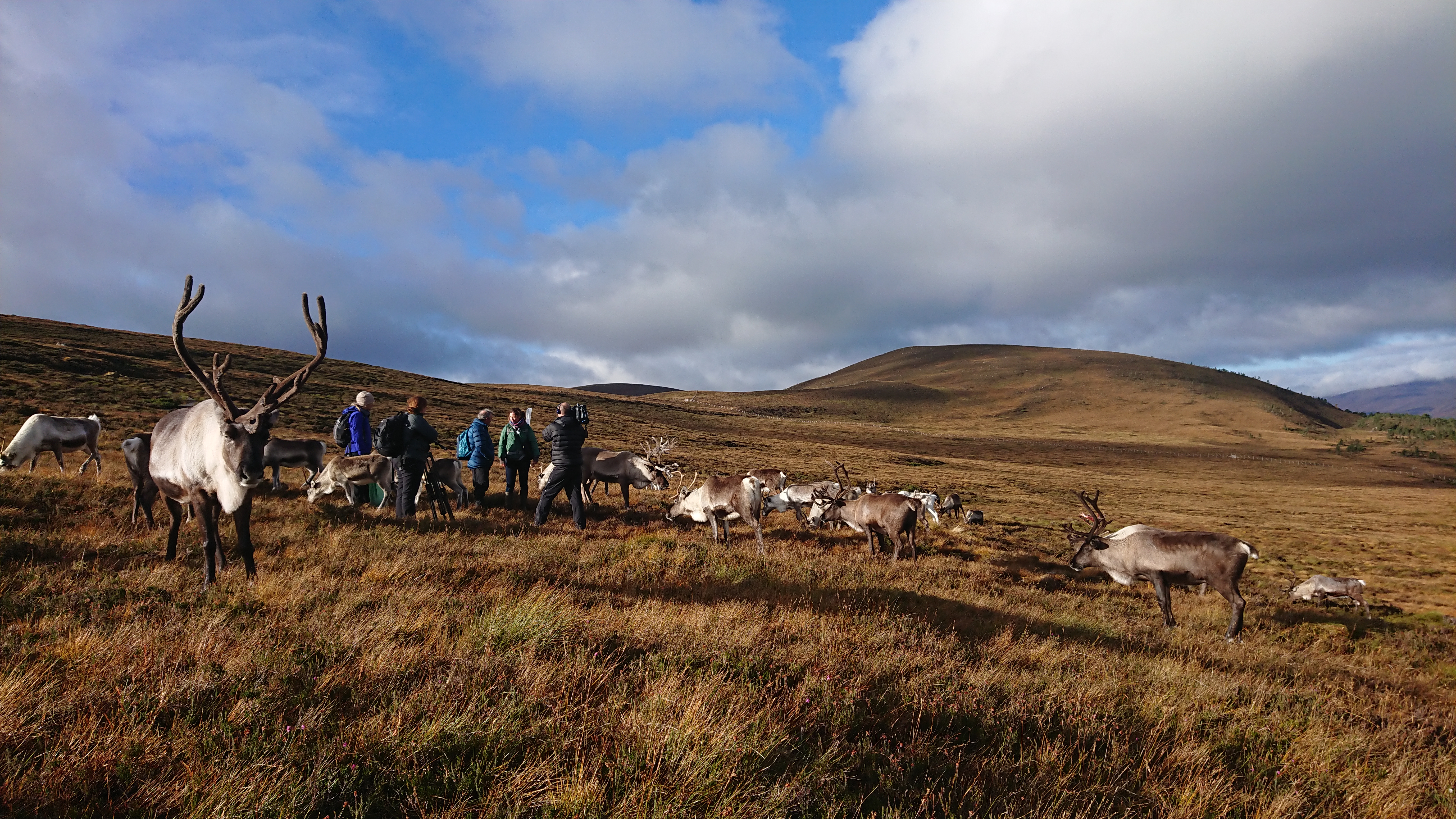
A lot of you will have seen ‘A Baby Reindeer’s First Christmas’ starring Holy Moley. This is by far the longest stint of filming we have ever done in one go taking three months. Most of the time a crew will just come up for one day, or even half a day to get a quick piece to fit into their program. Sometimes we are asked to go on location somewhere else with the reindeer. Andi and I worked for a while down south at a private zoo which as well as caring for the animals it involved taking them onto film sets so we are quite used to it. There can be a lot of sitting around so now that I make the rules I am pretty ‘on it’ with our timings as the last thing I want is for the reindeer to have to sit around all day waiting for the actors to be ready so they get a set time frame now to work with us.
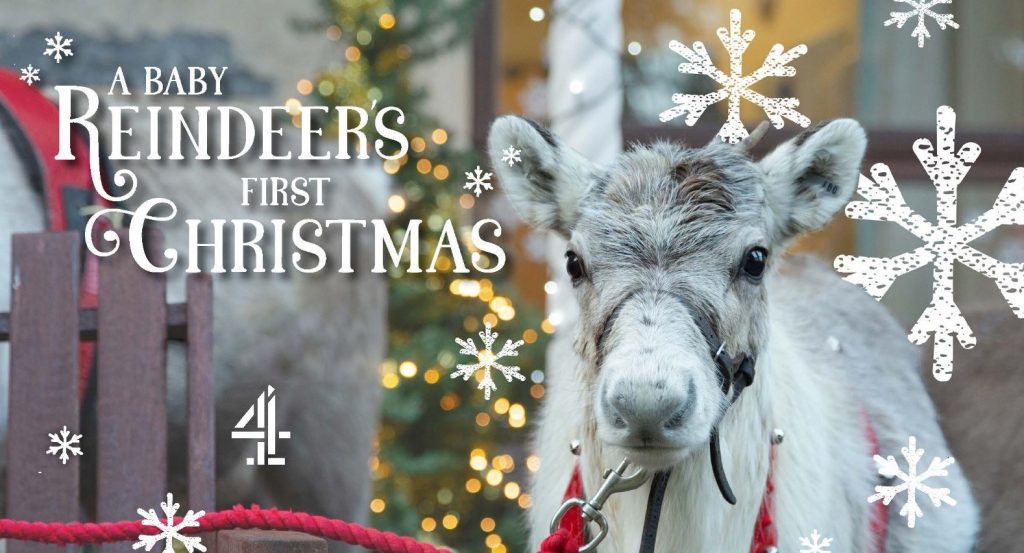
Some of our sets have included an Ann Summers photoshoot with models in the Christmas wear. Luckily the reindeer just had to stand nearby and look pretty, which they did beautifully may I add! Last year we were asked to an American short film where the reindeer were portrayed as ‘wild’ so we were in some lovely woodland on the west of Scotland. We did mention to the producers that reindeer aren’t natural to this area but I think the film was just a Christmassy crowd pleaser so they weren’t picky when it came to native species. We’ve worked with fashion models both up on the mountain and also out on location. If I’m totally honest I can’t remember what they were advertising but I can tell you the clothes they were wearing weren’t exactly in keeping with reindeer and their natural habitat… in fact the models must have been freezing!
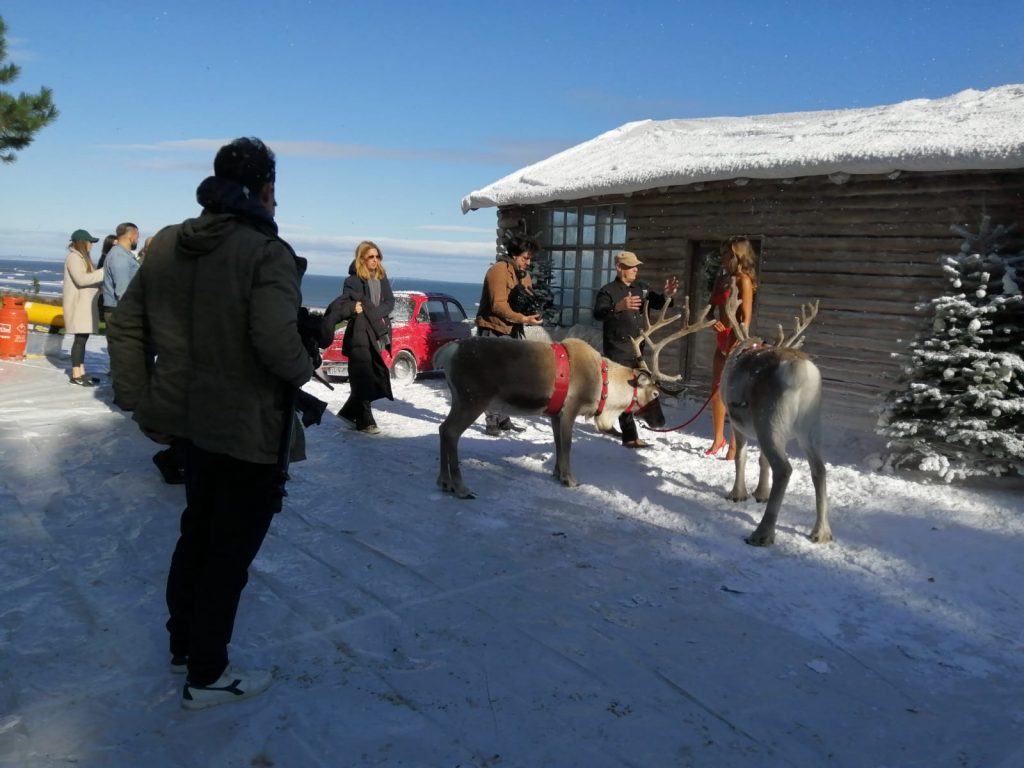
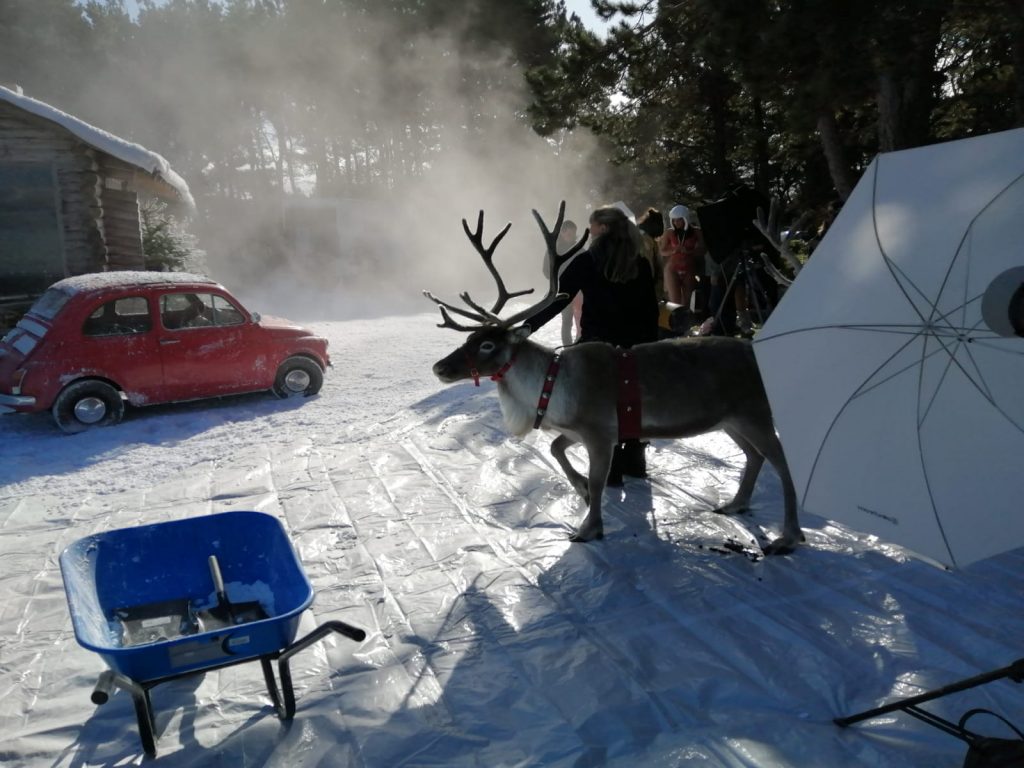
For a kids TV drama I drew the short straw and had to dress up as a Viking, or at least I think it was a Viking. The show was about a Viking Princess and my colleagues took great delight in having a good laugh at me with some fairly random clothes on! Our reindeer have been part of photoshoots advertising cars. Audi, Landrover and Jaguar have had our reindeer pose next to their fancy pants vehicles.
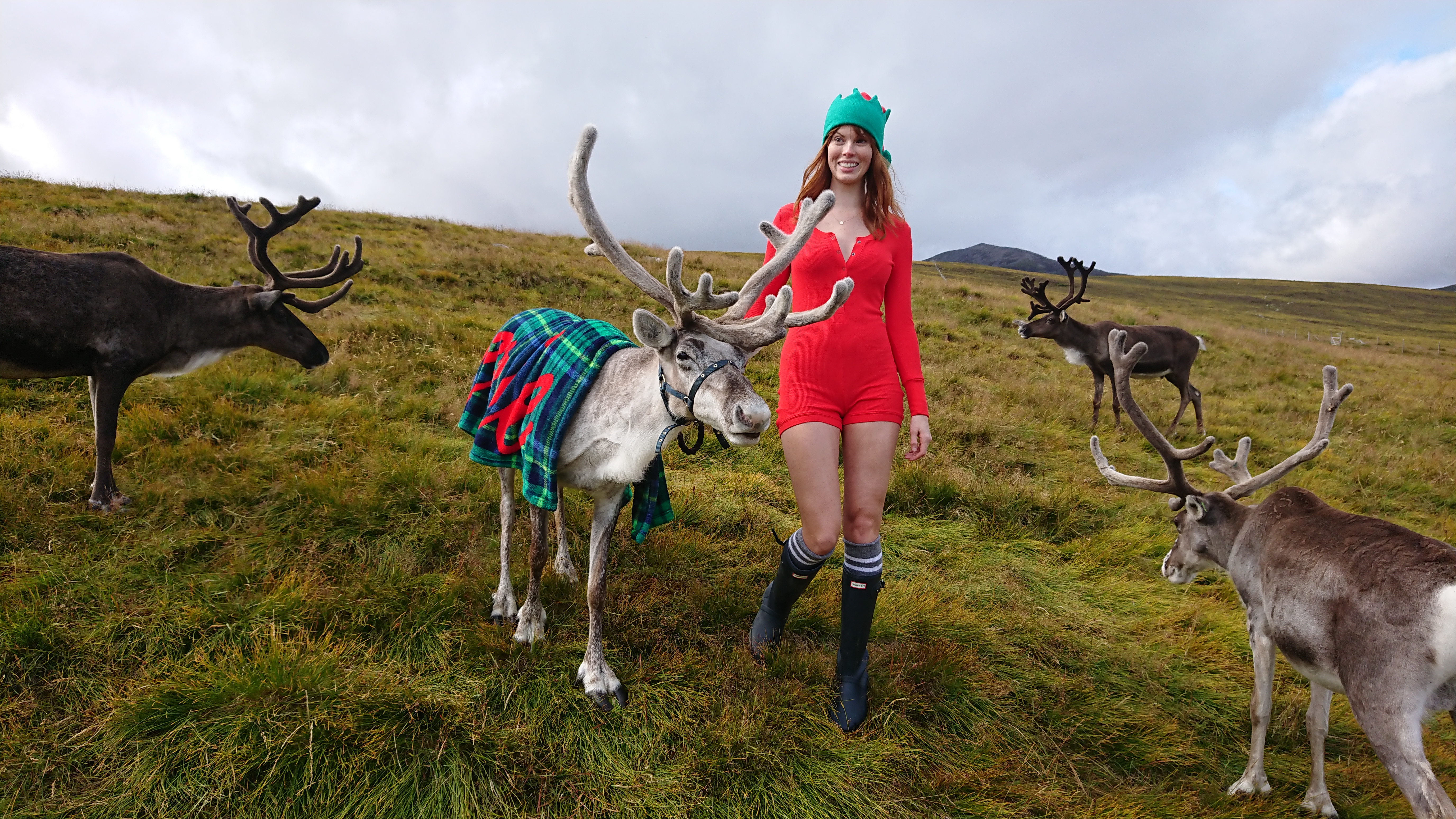

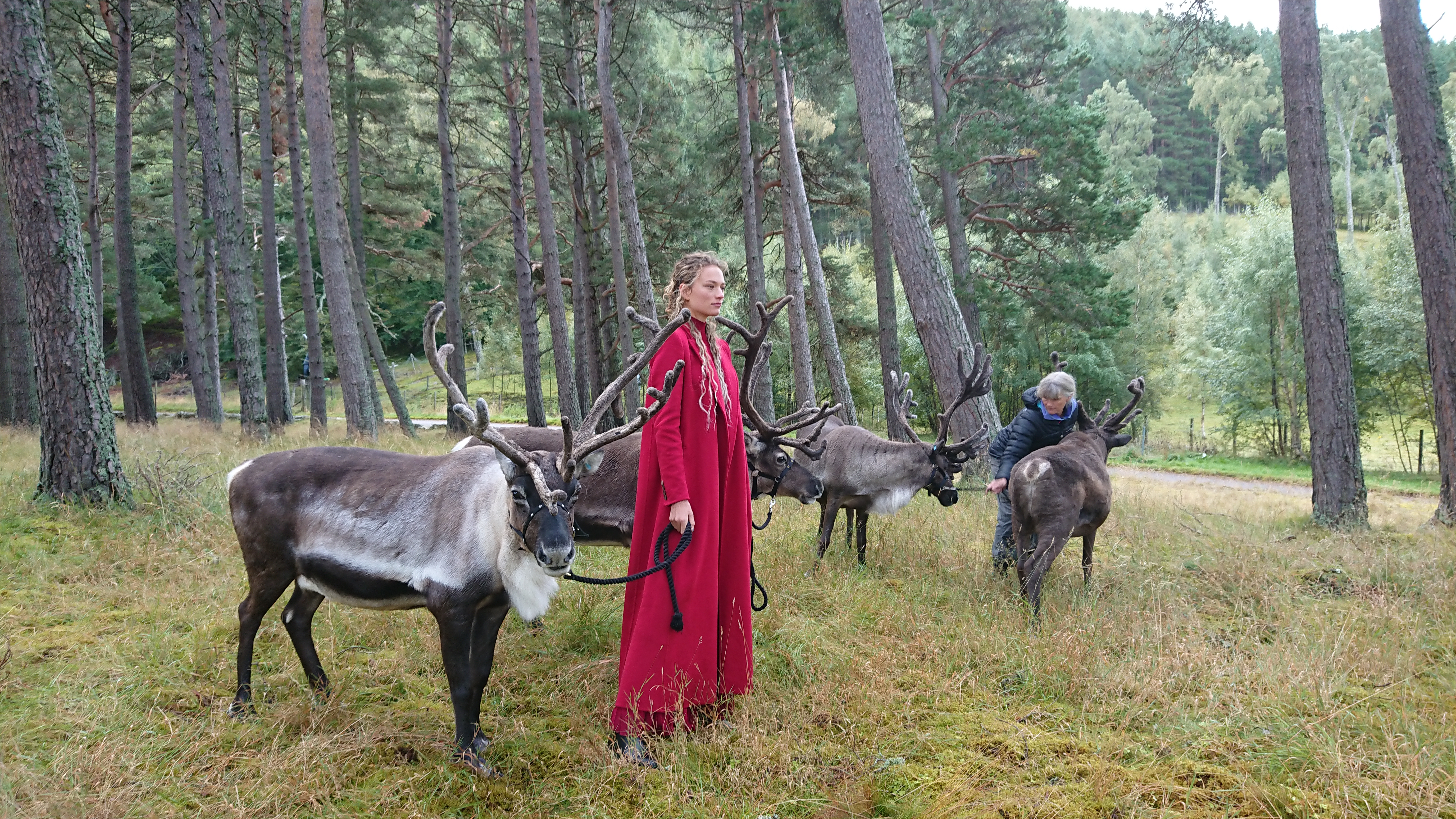
On the whole, however, we tend to do a one-on-one chat with a presenter who is visiting the area. In the past we’ve worked with Ben Fogle, Ray Mears, Bill Oddy, Susan Calman, Matt Baker, Katy Hill, Michaela Strachan, Gordon Buchanan, Elain Smith, James Martin, Bear Grylls and many more. We try to get Tilly to do these chats as she’s so great on TV but inevitably either myself or one of my colleagues will be roped in. We don’t tend to have to chat about anything out of the ordinary, just aren’t they lovely and tame, we mention some adaptations, their names and in general just enjoy spending time with the reindeer on the hill.

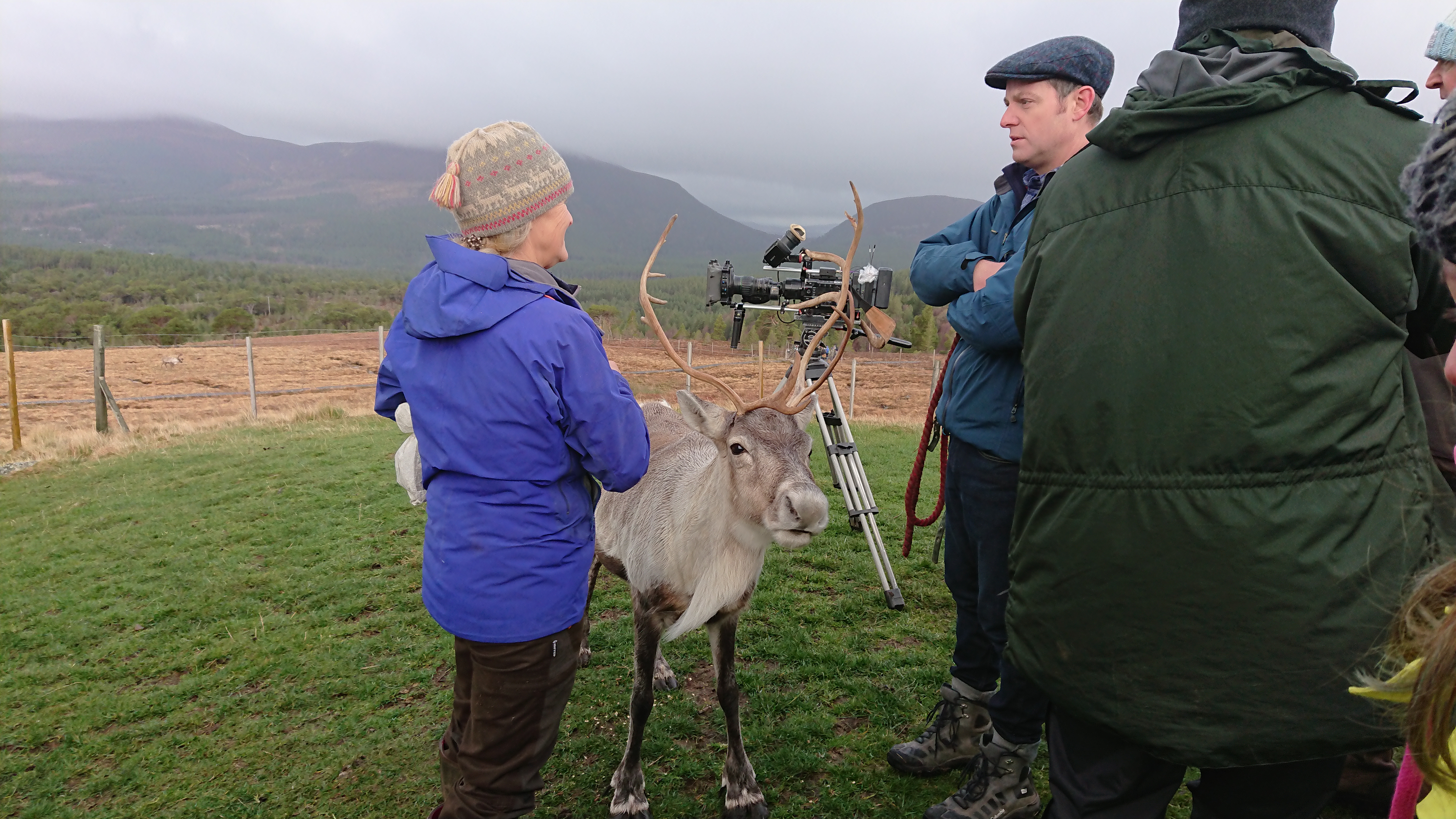
So, there is a bit of insight to another part of our work with the reindeer. I love working closely with the reindeer like this as you get to know them really well individually and we already know what great characters they are so it’s easy to show them off and be proud of them!
Fiona



